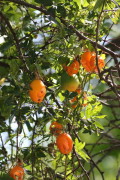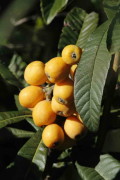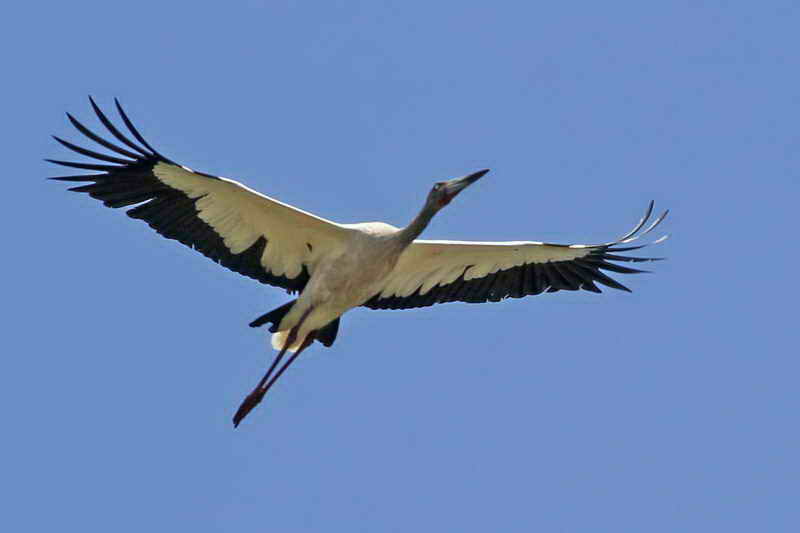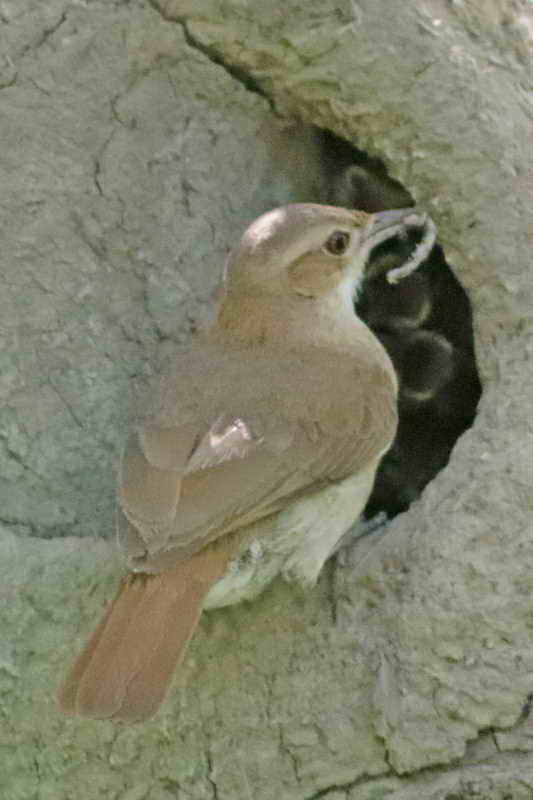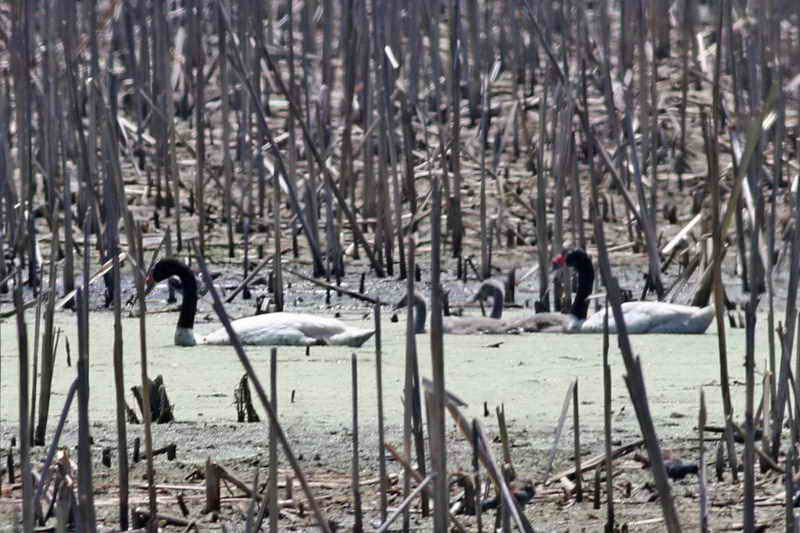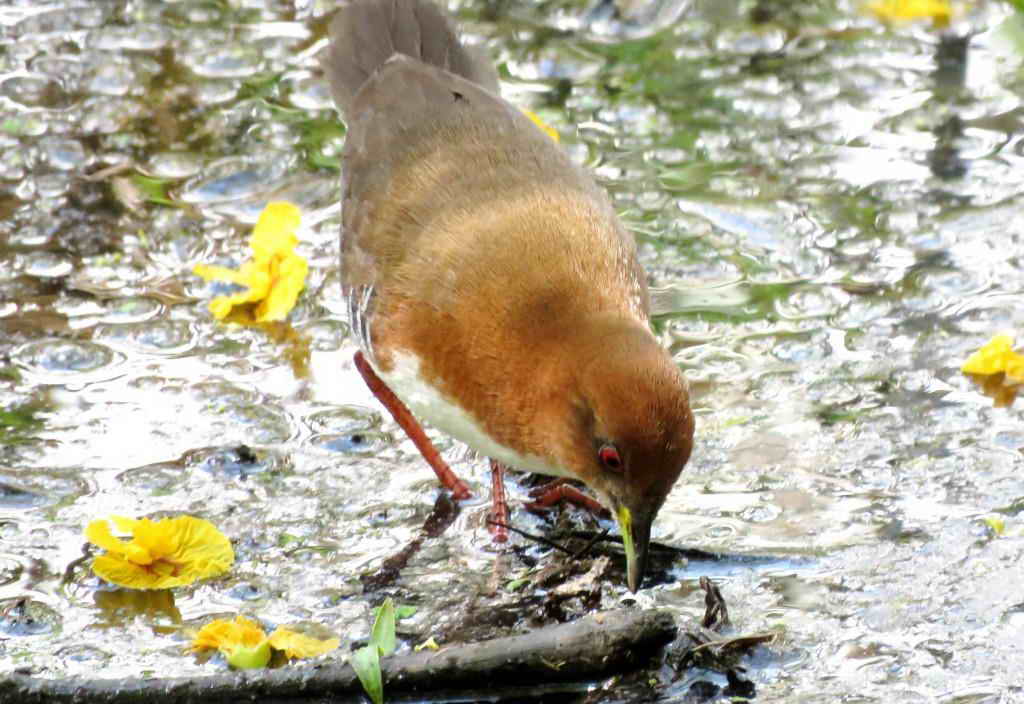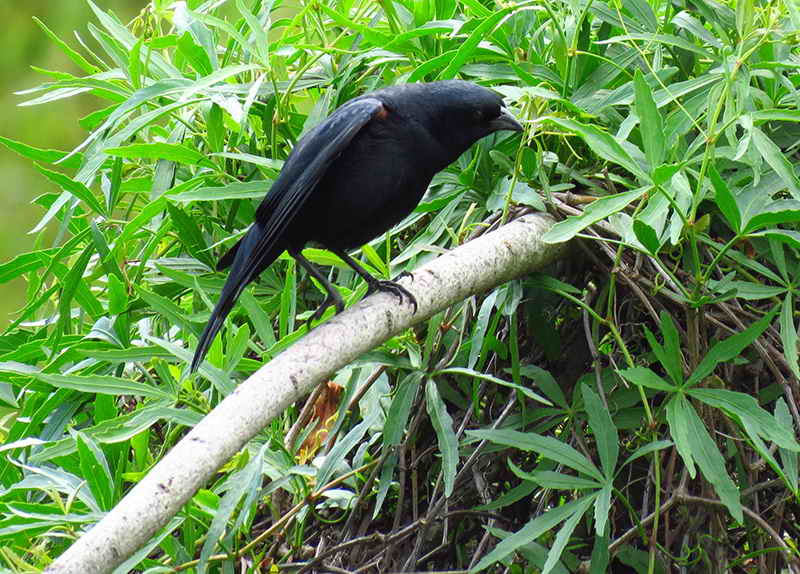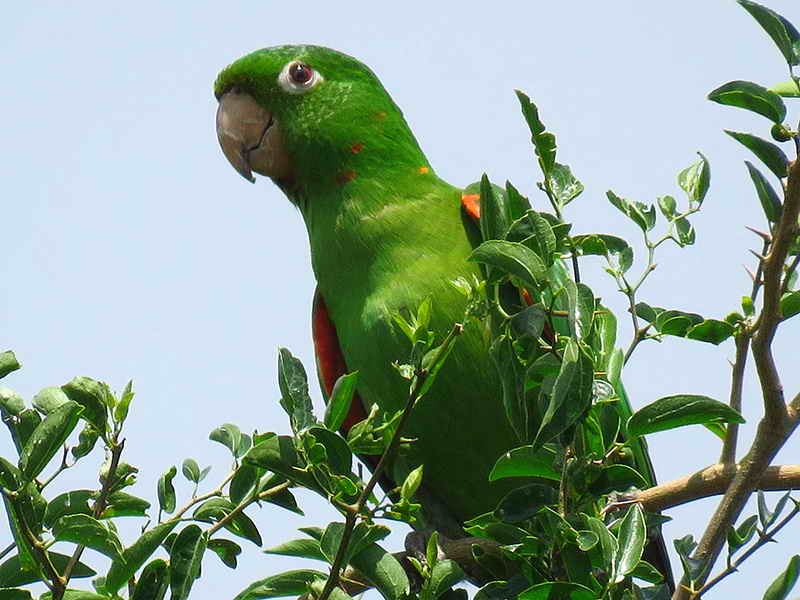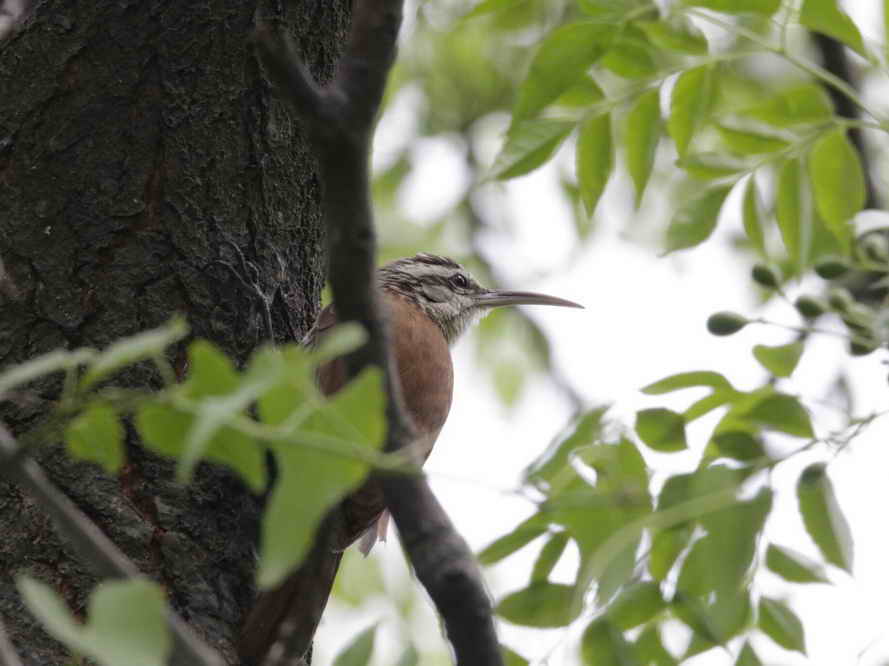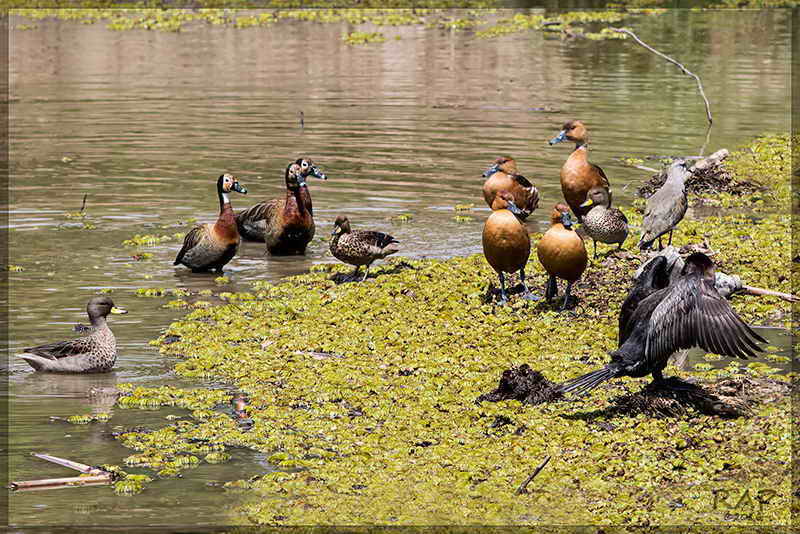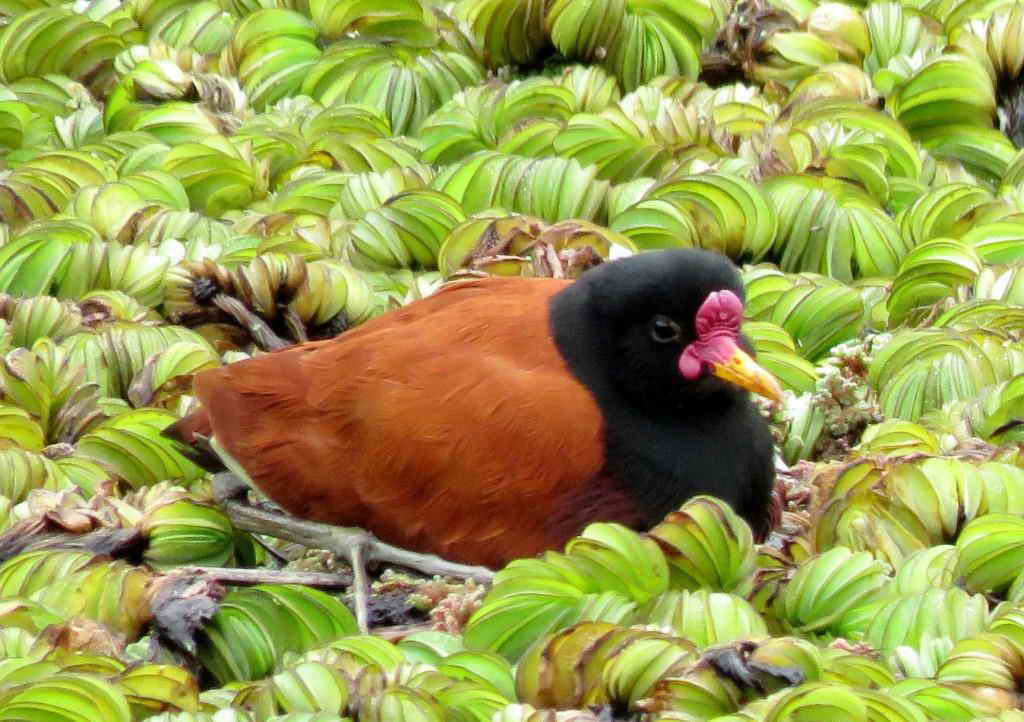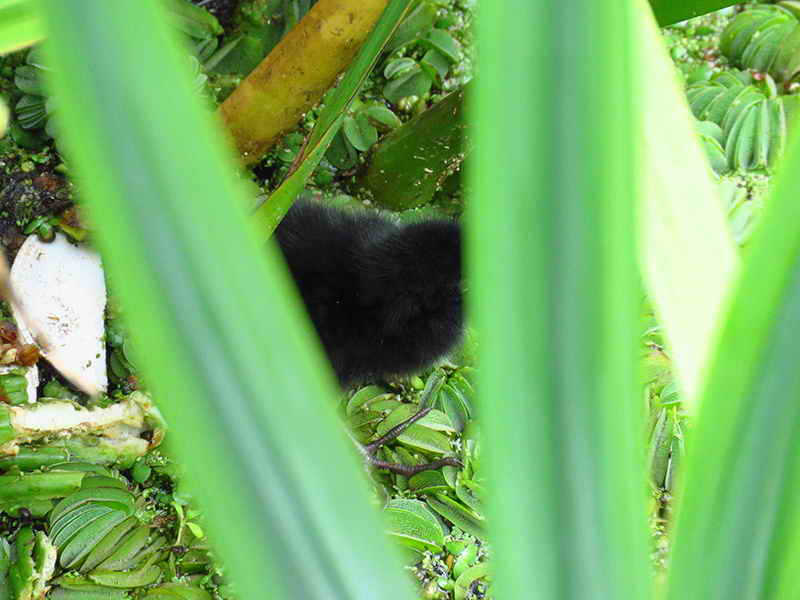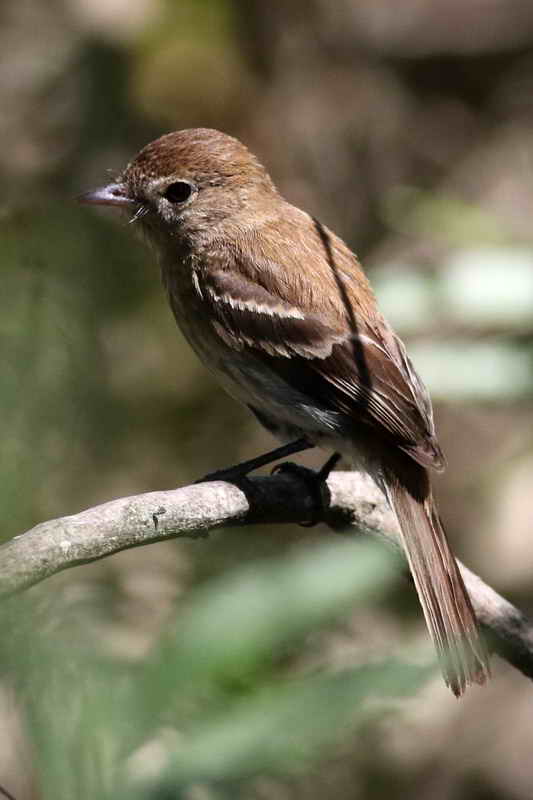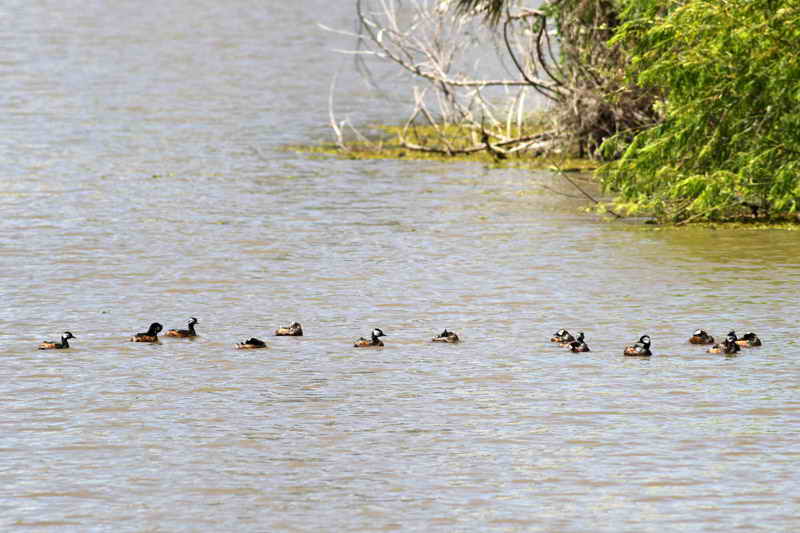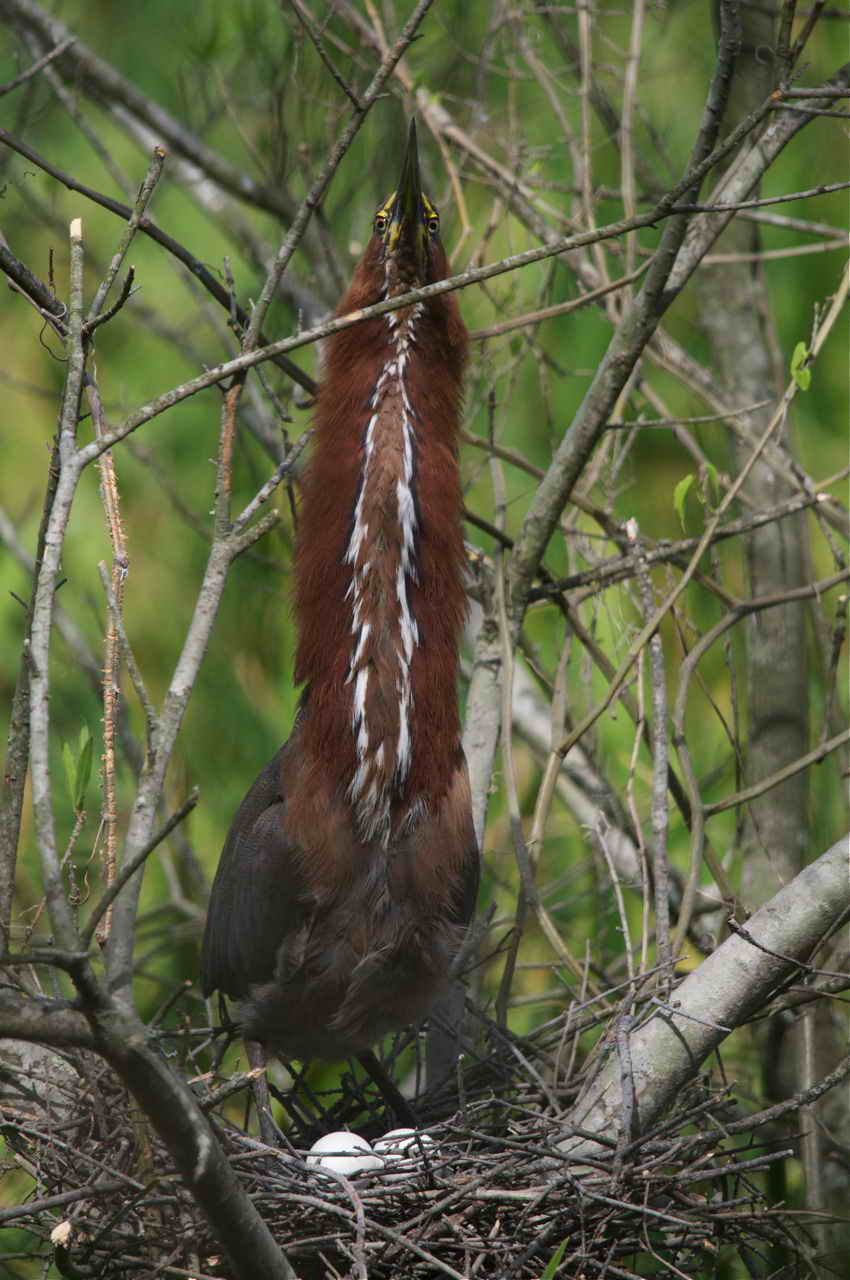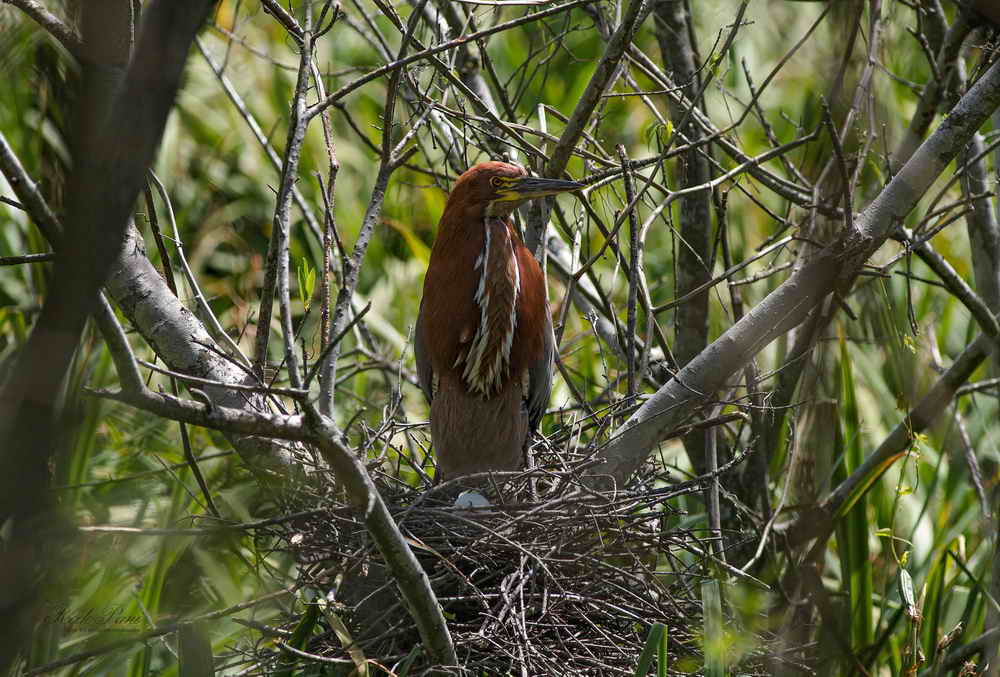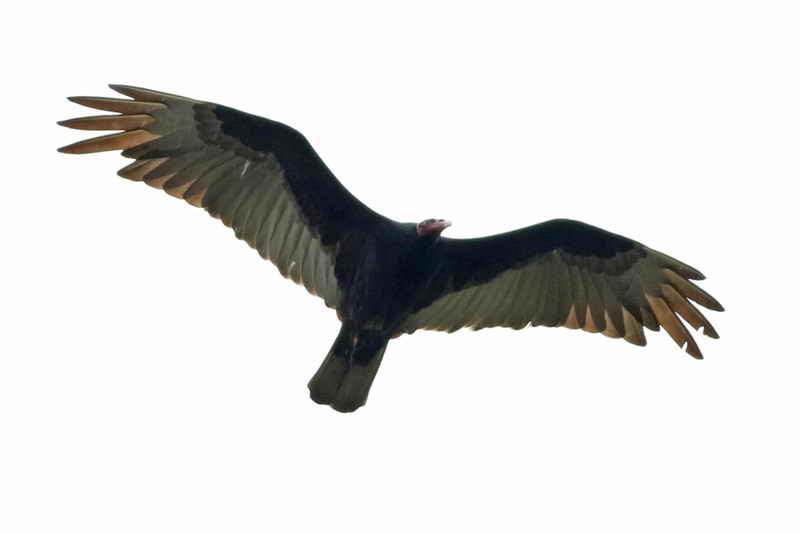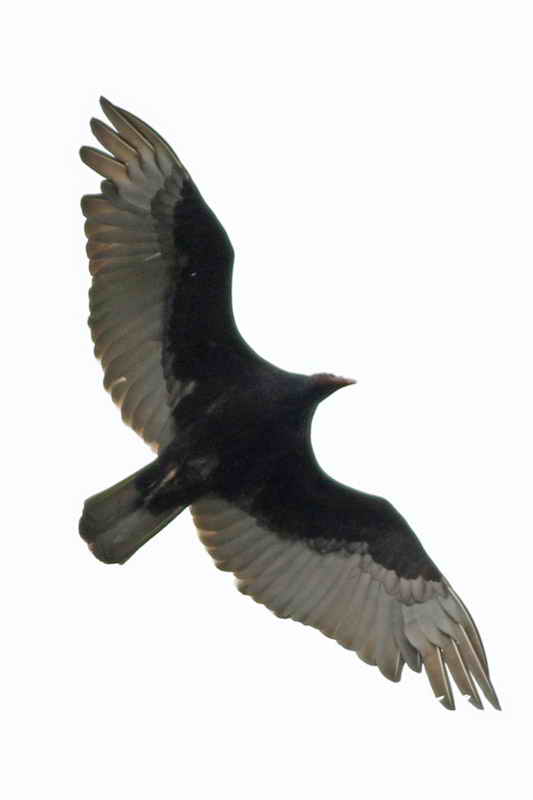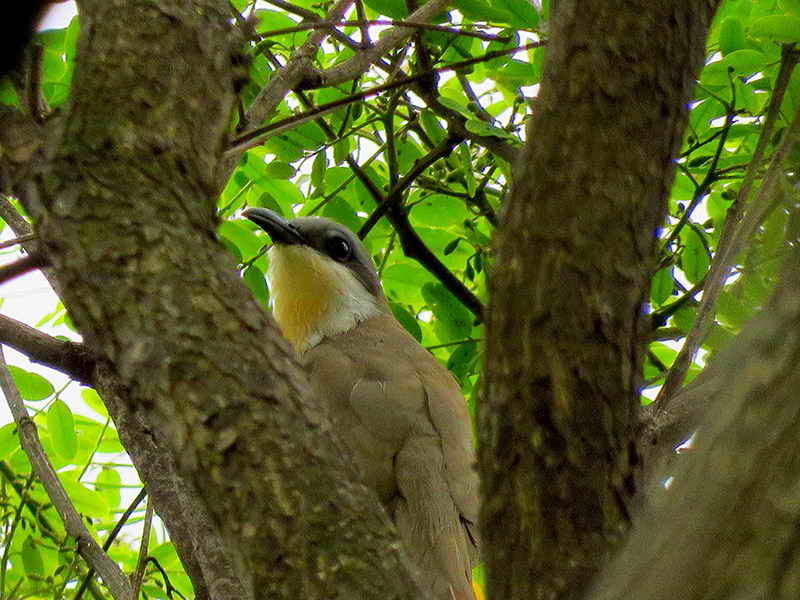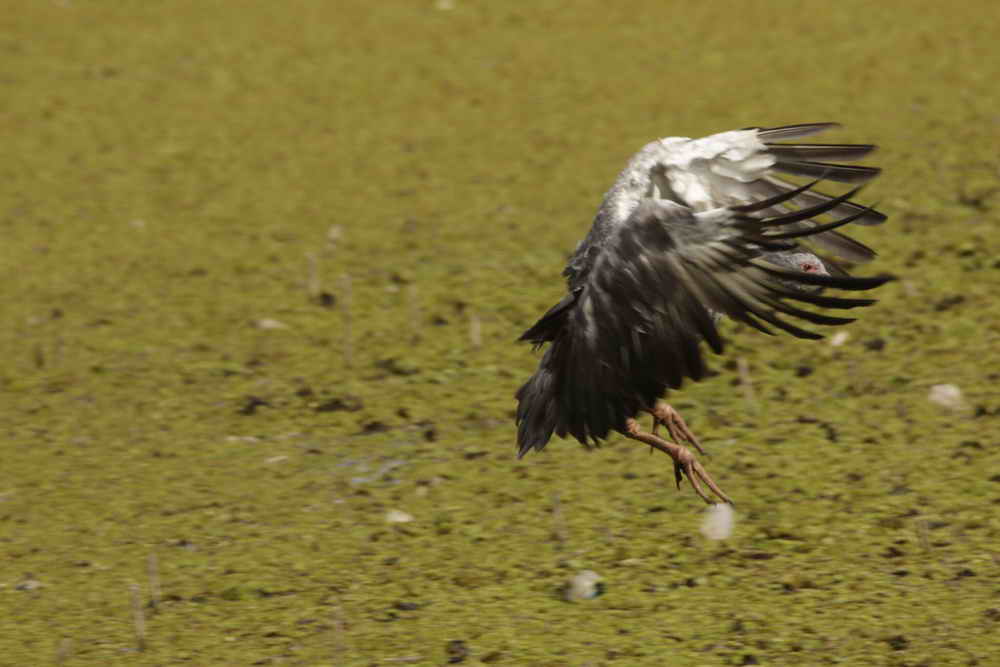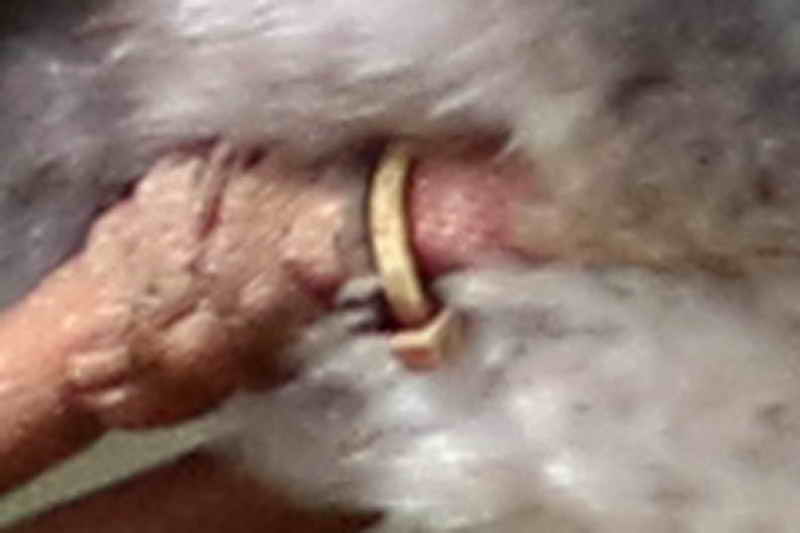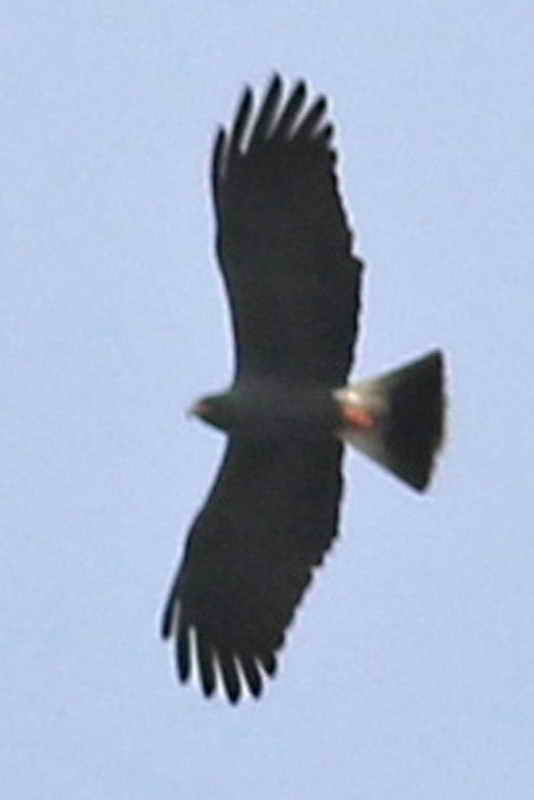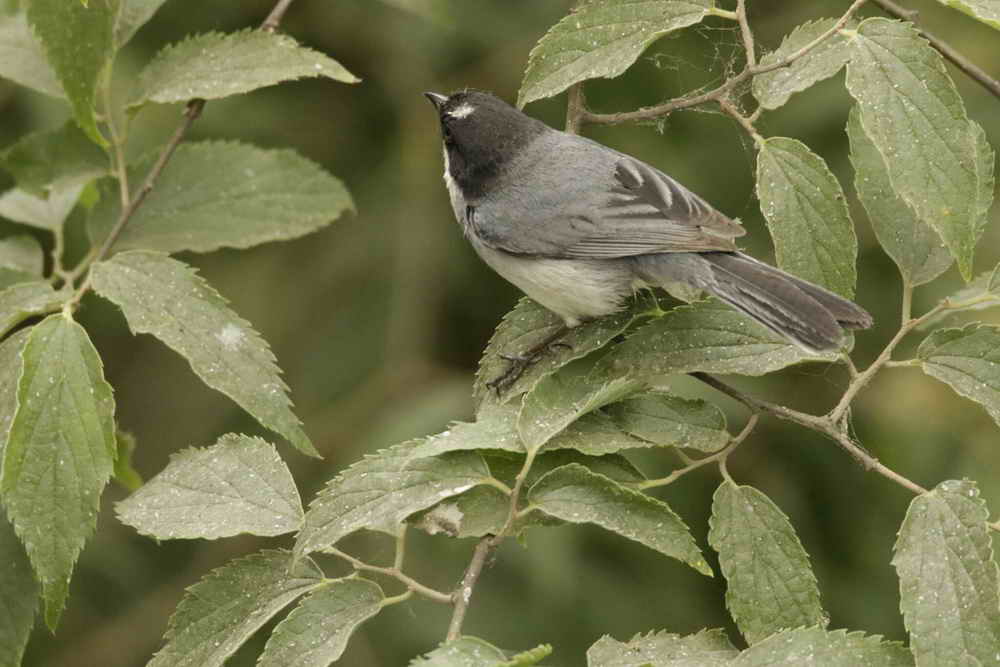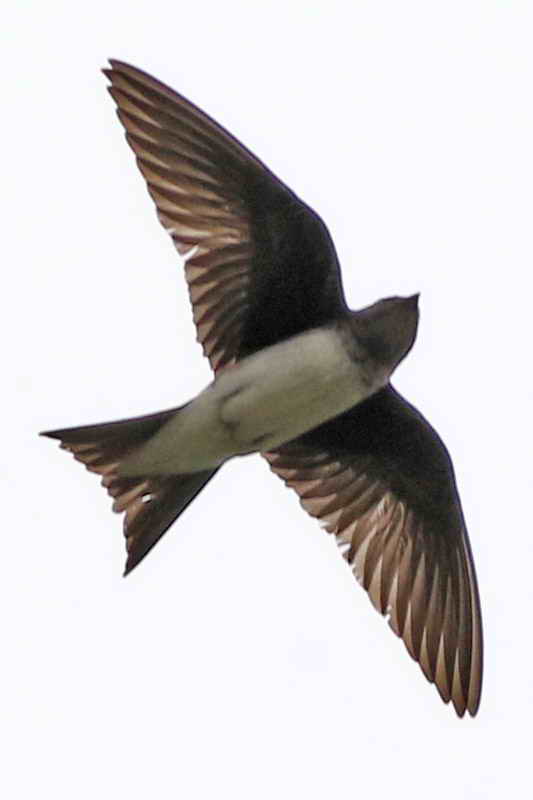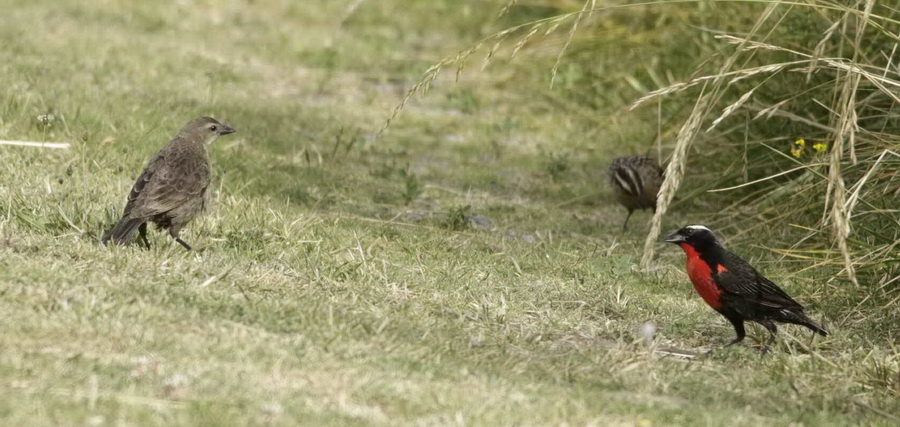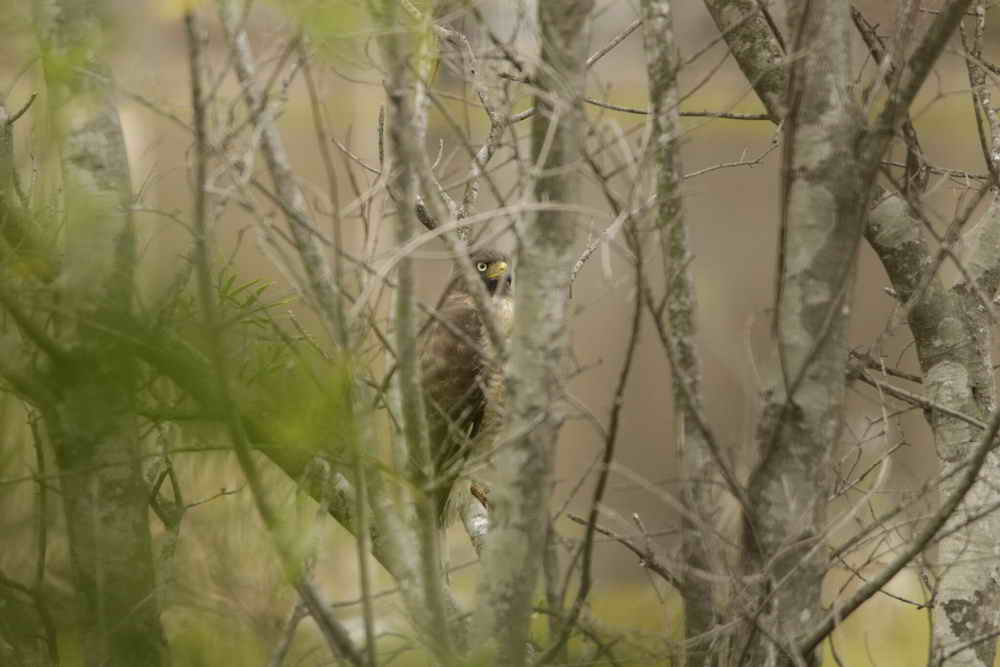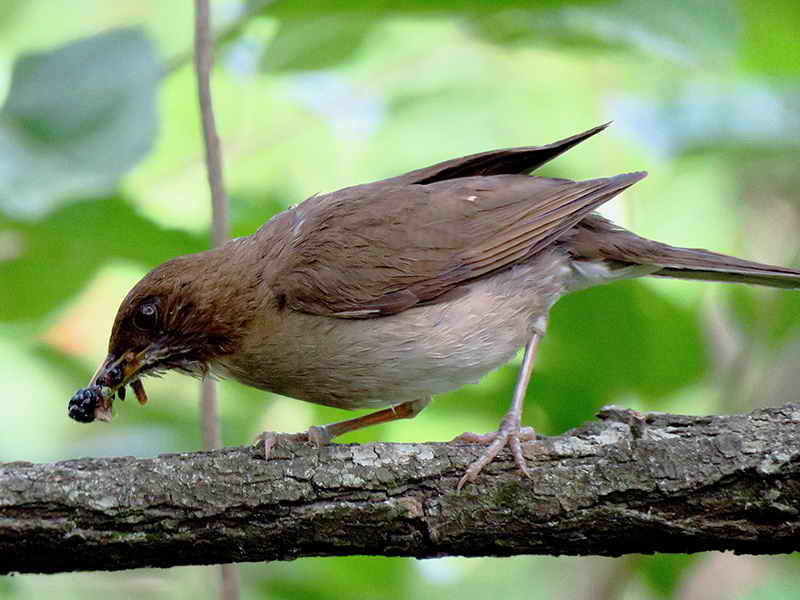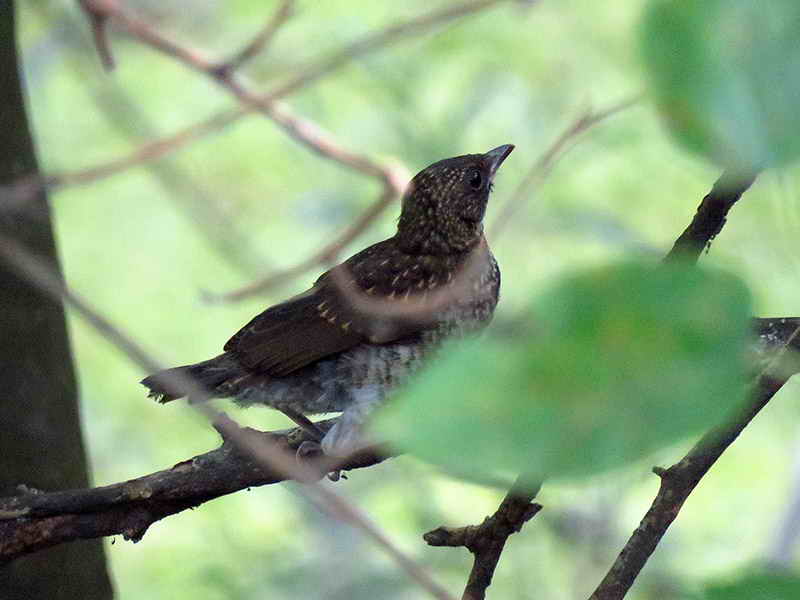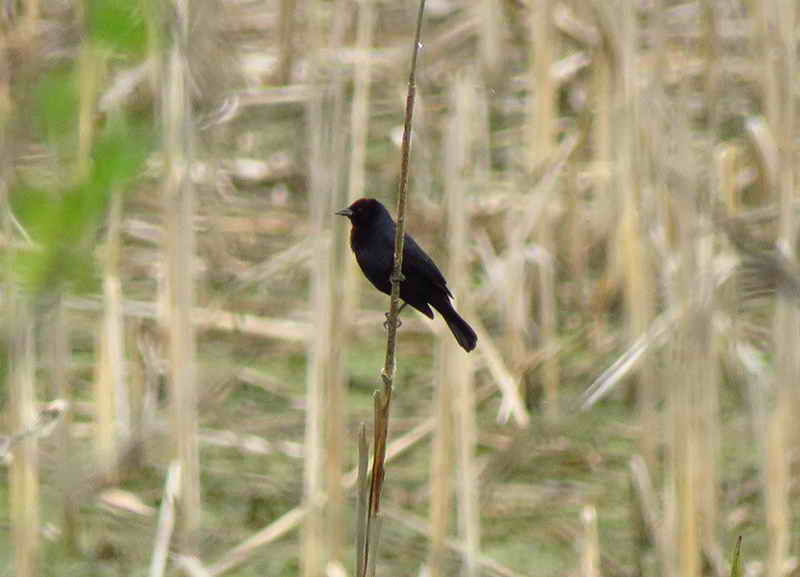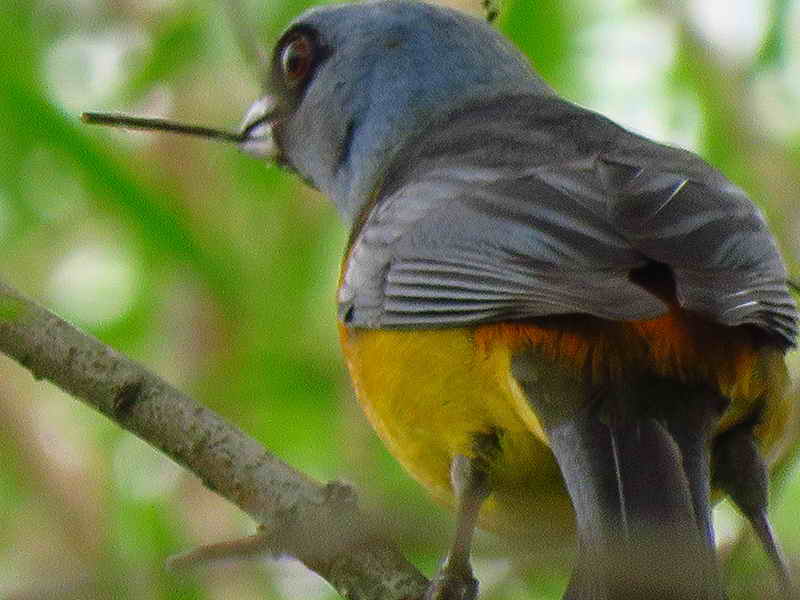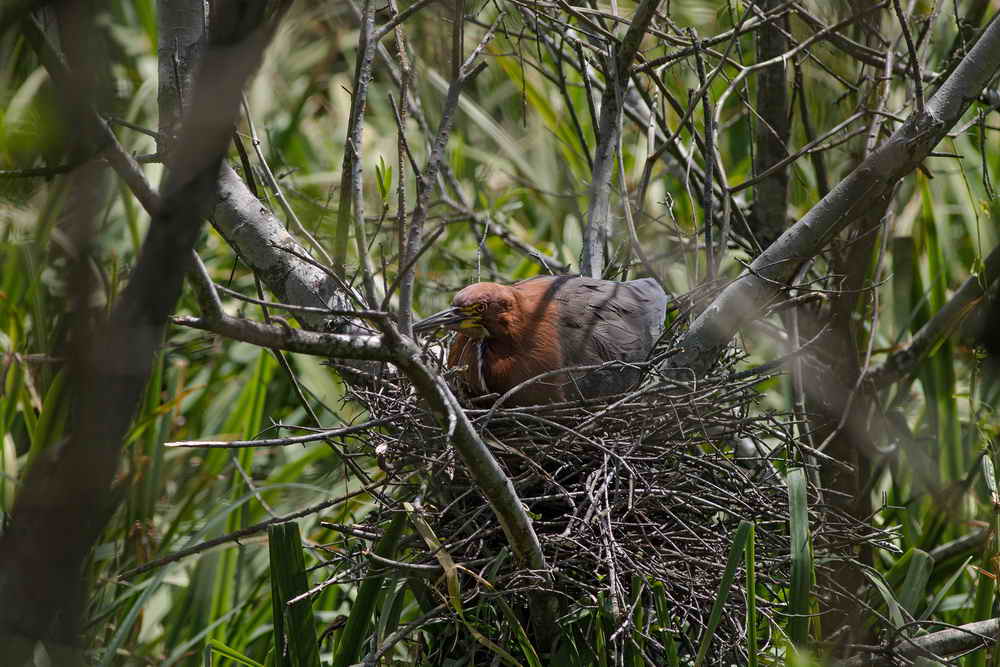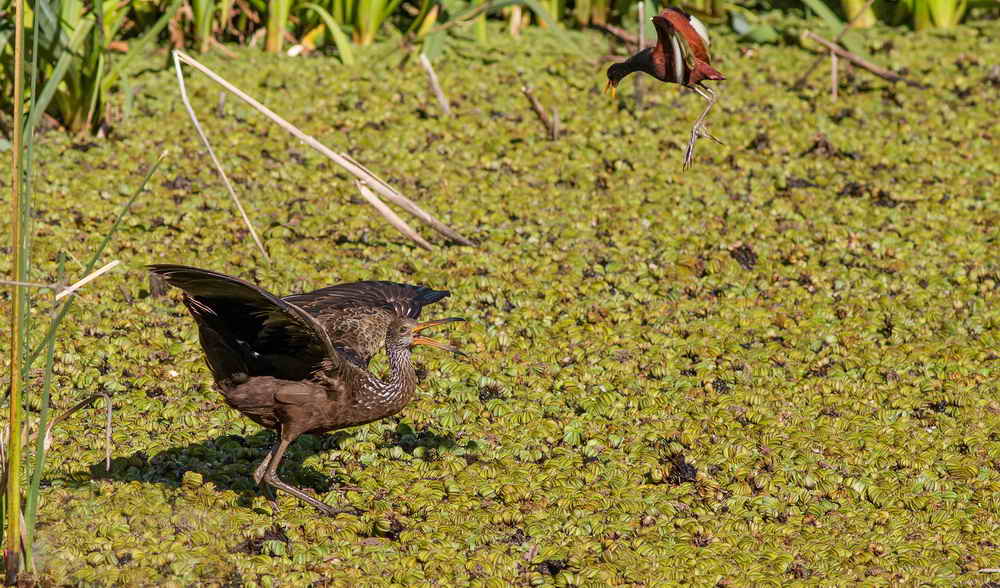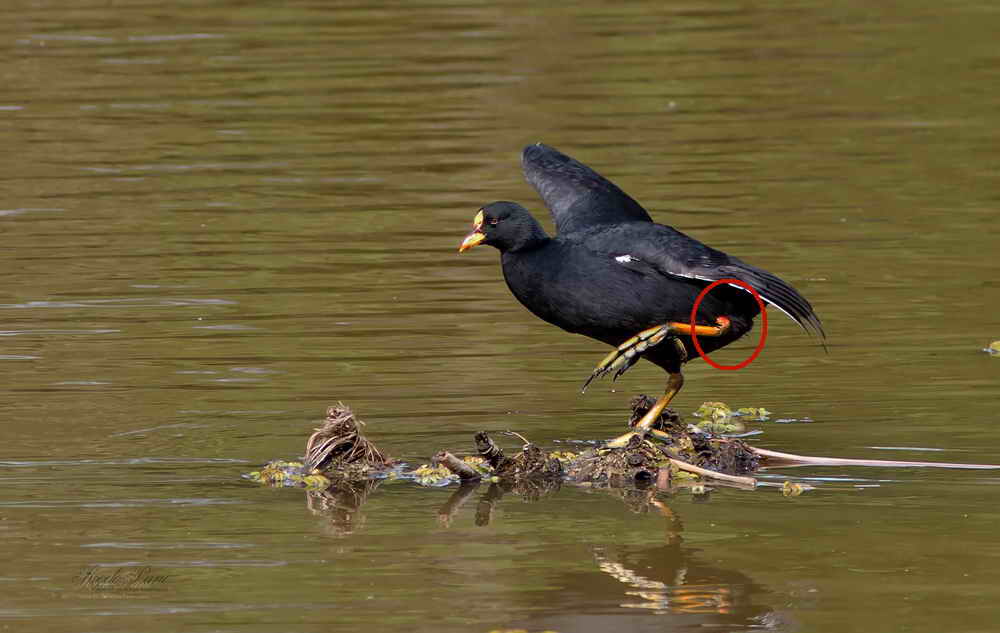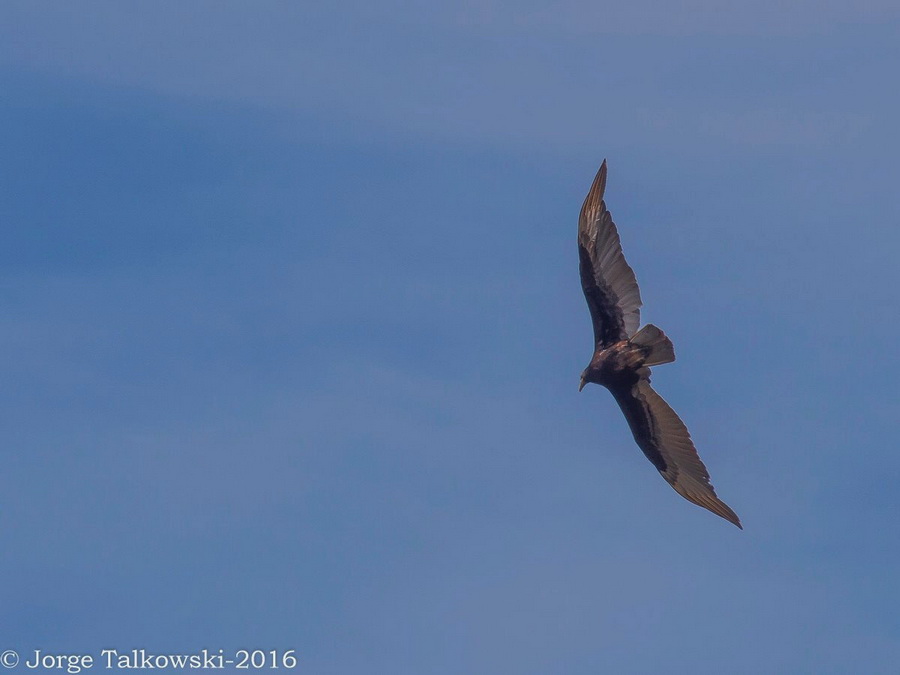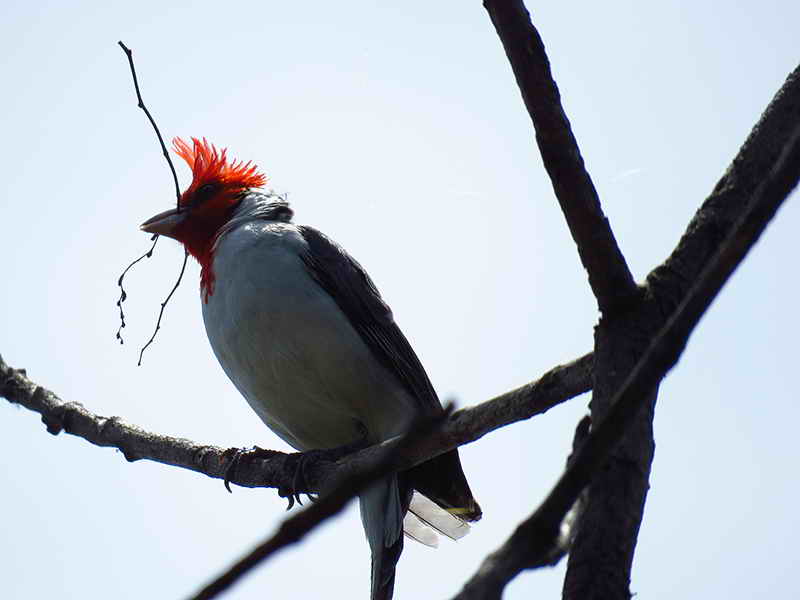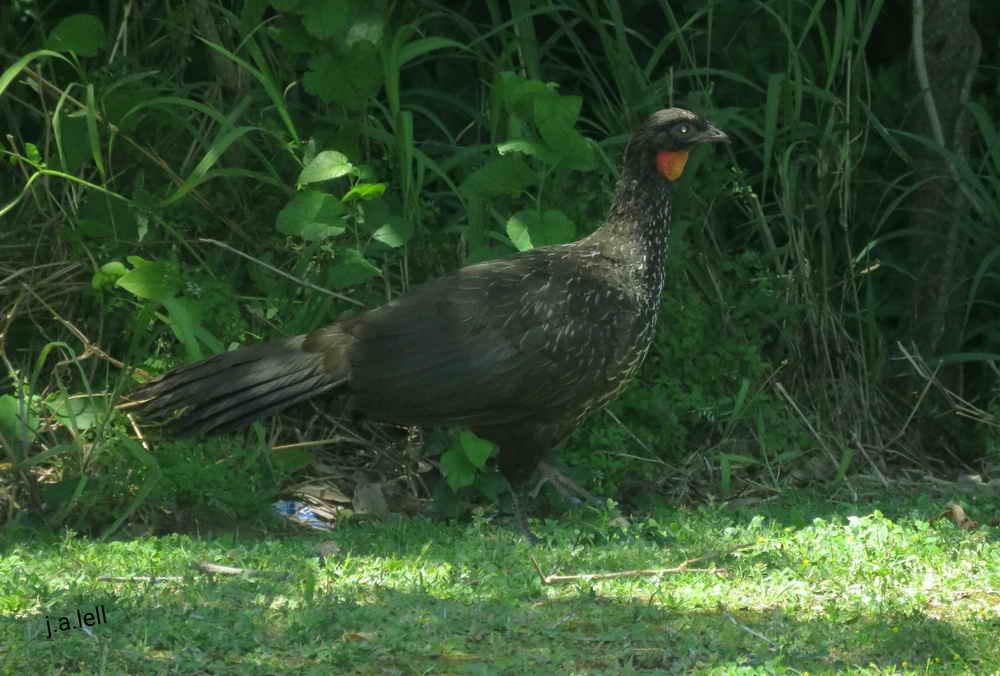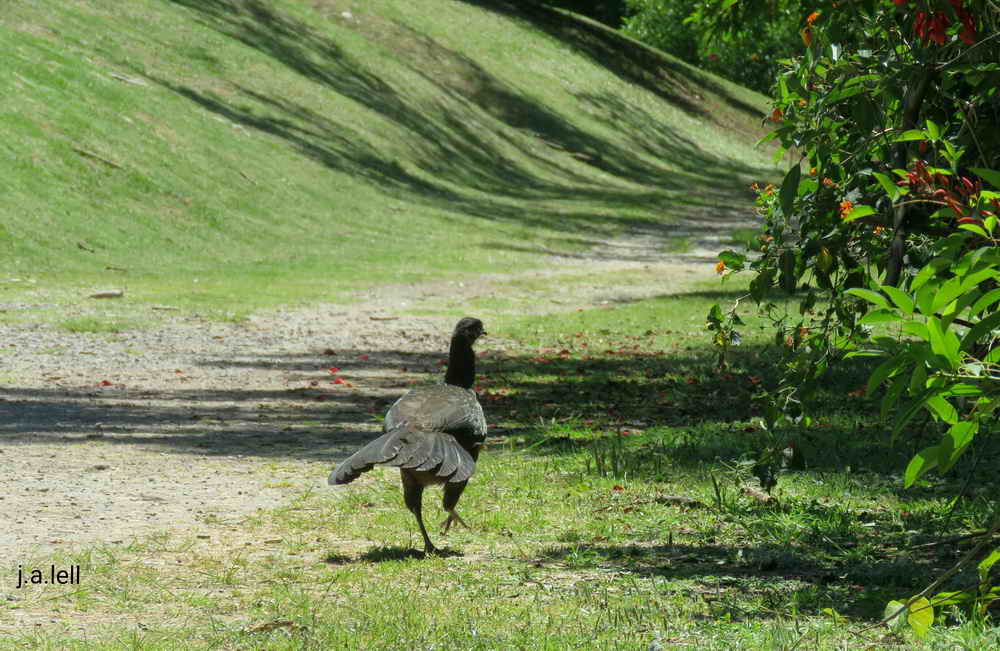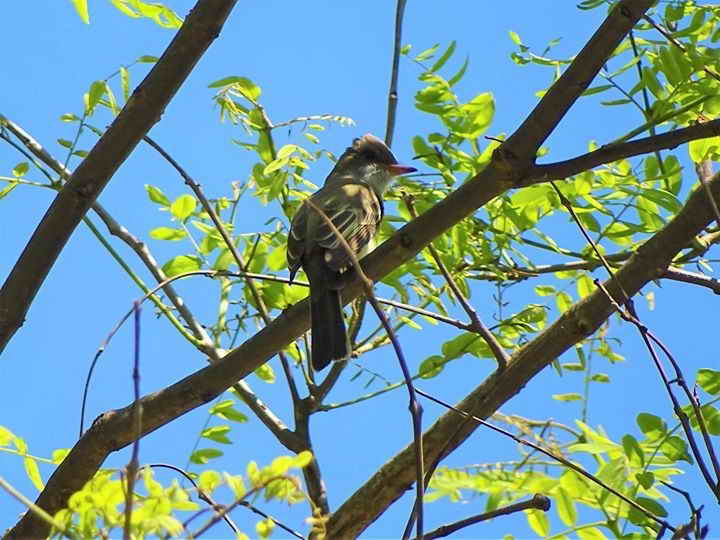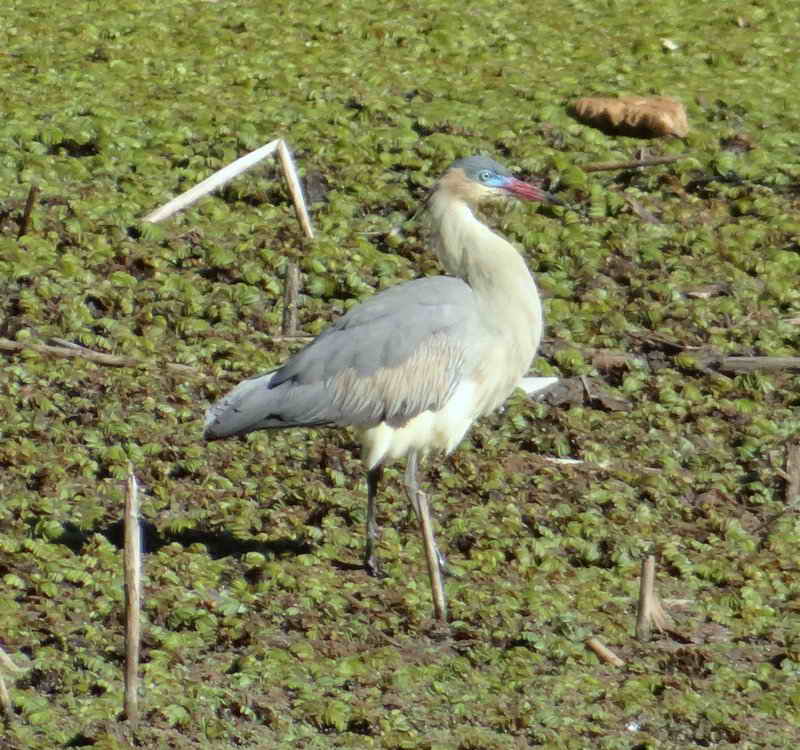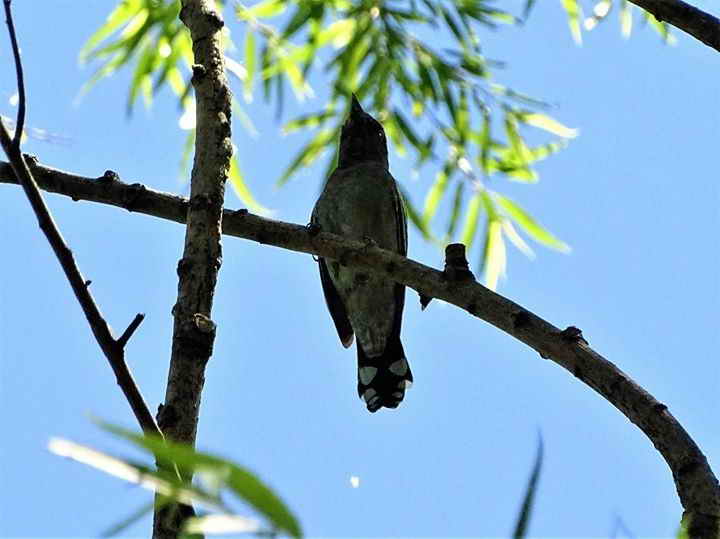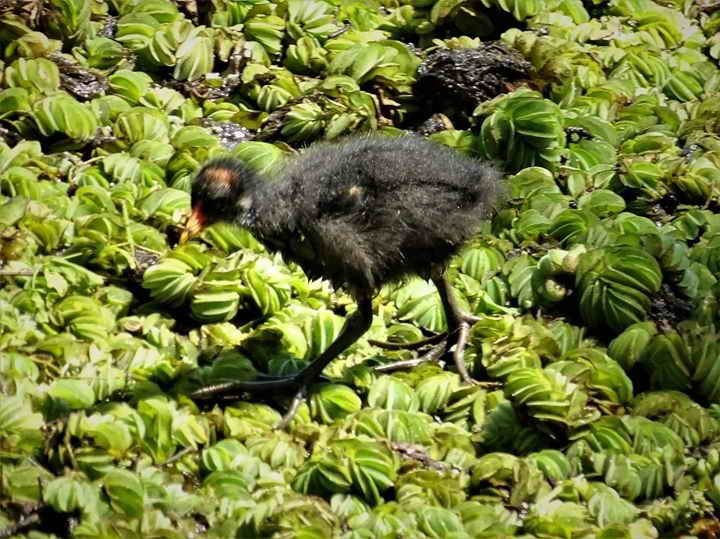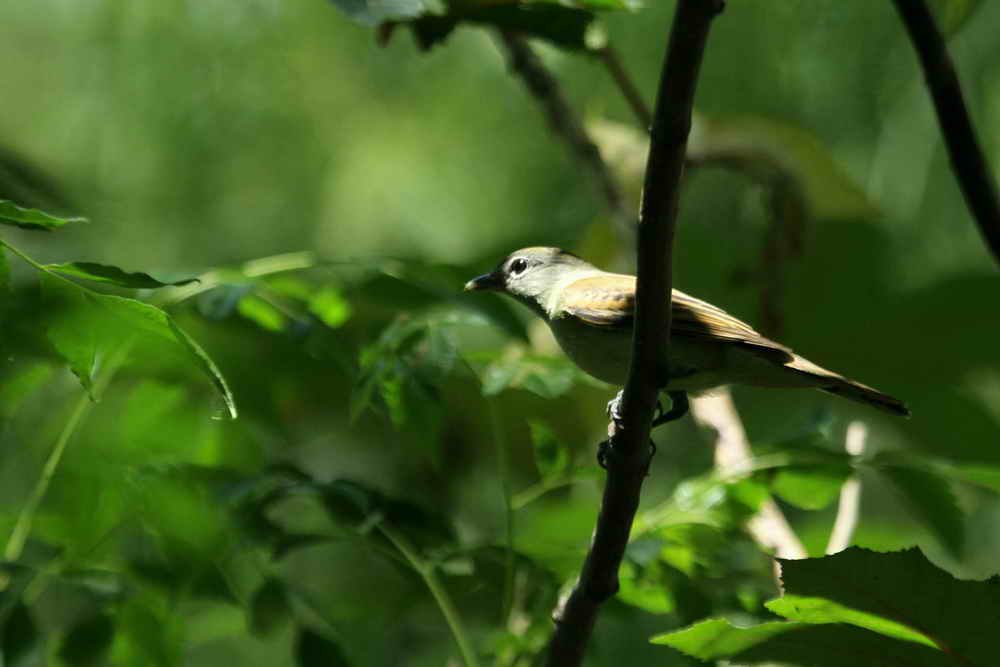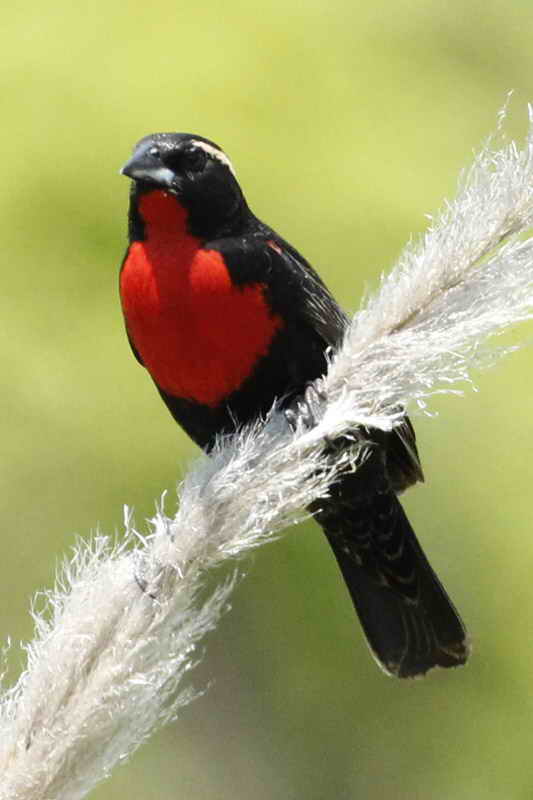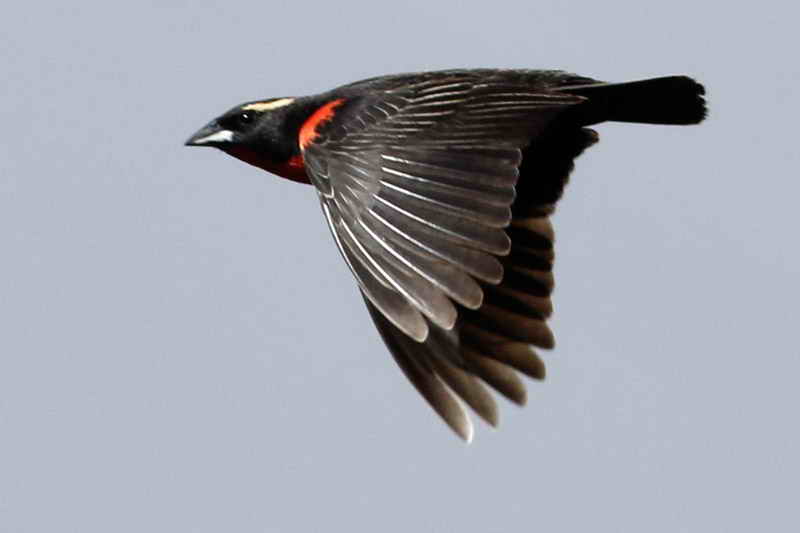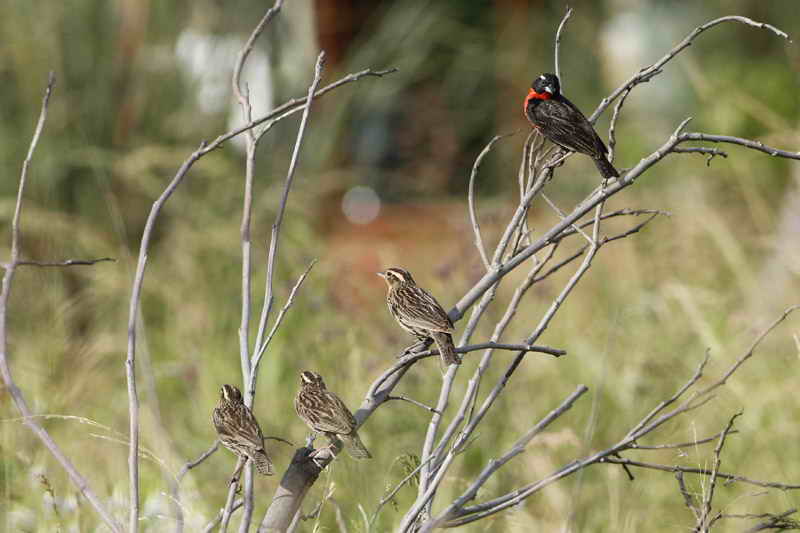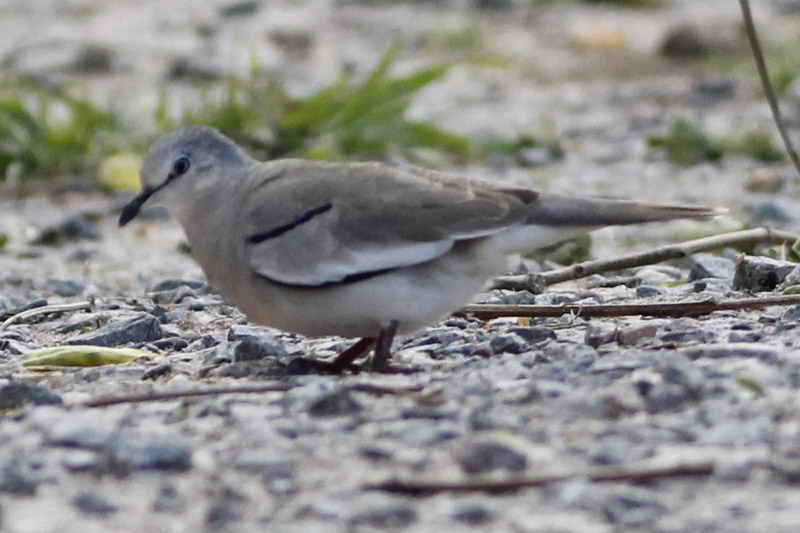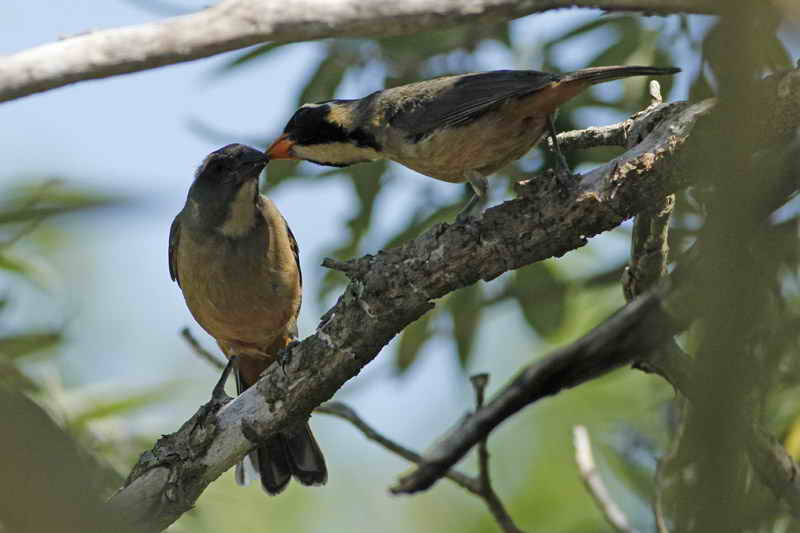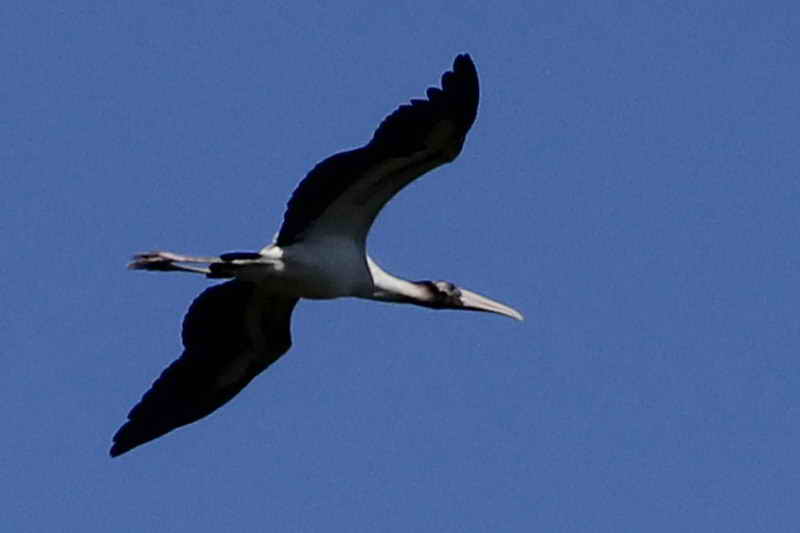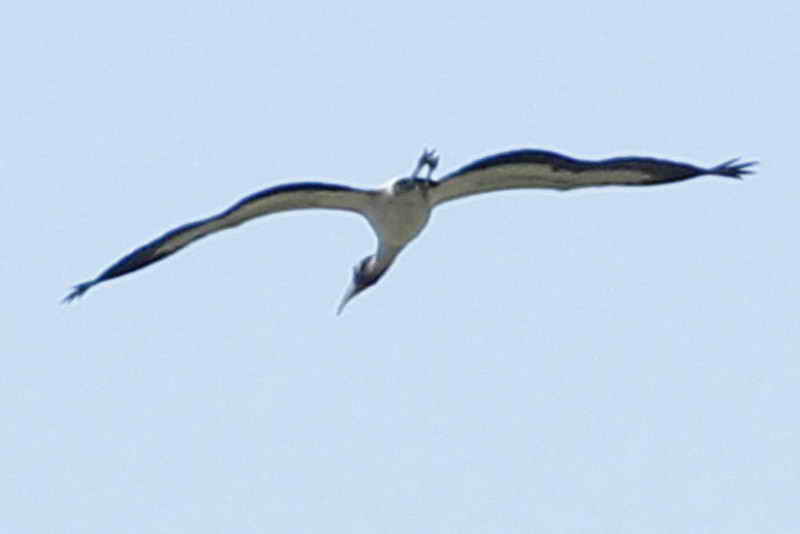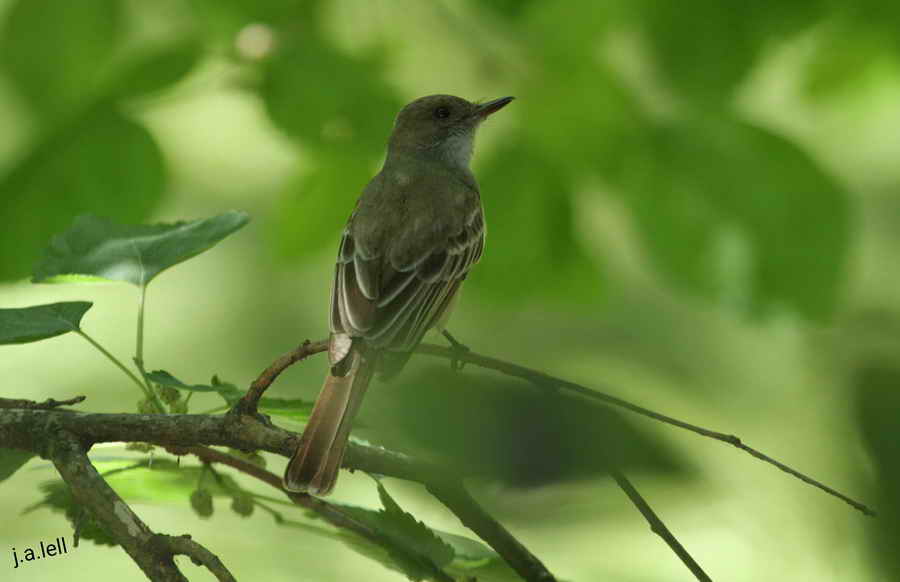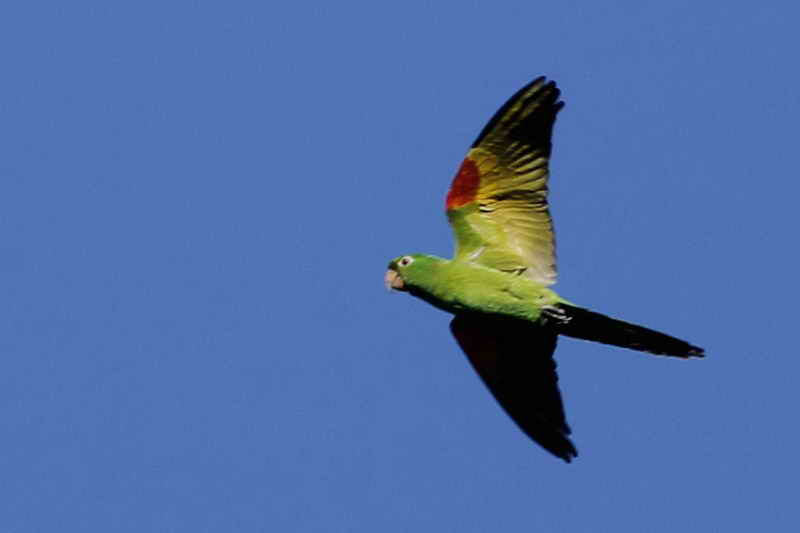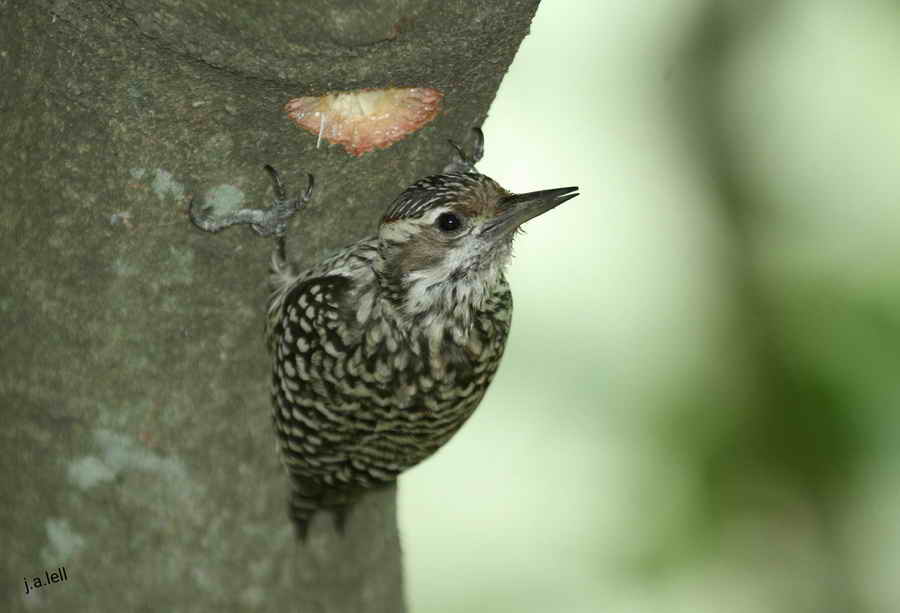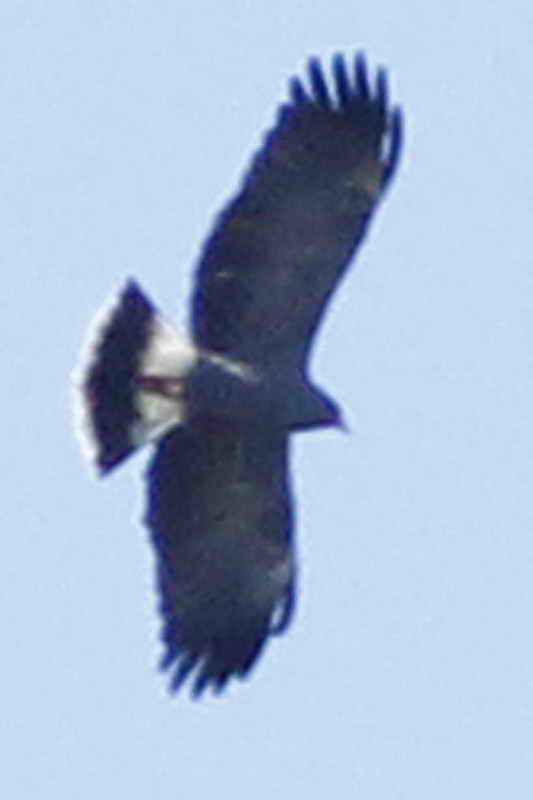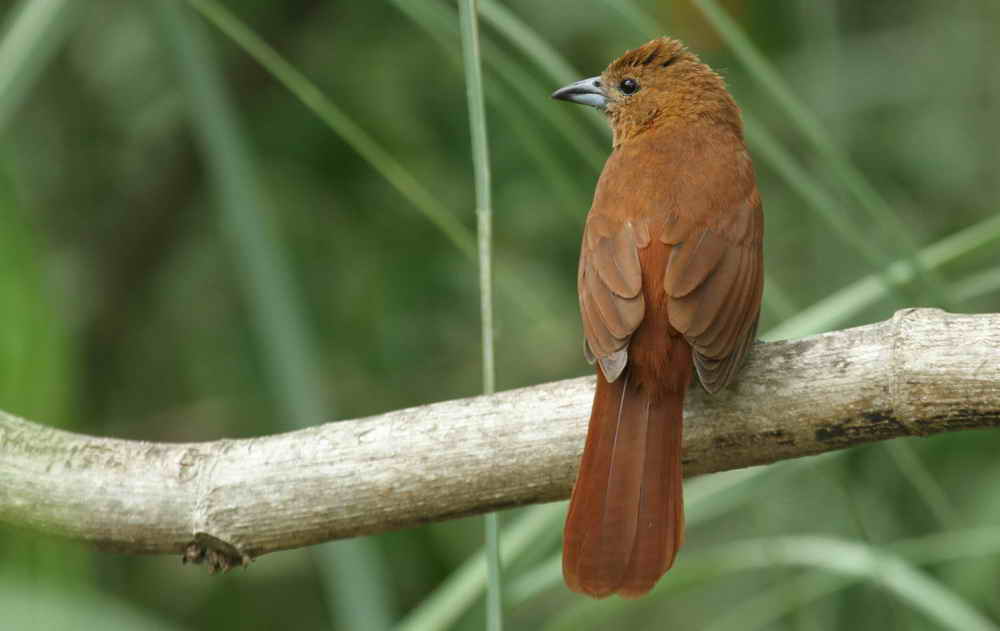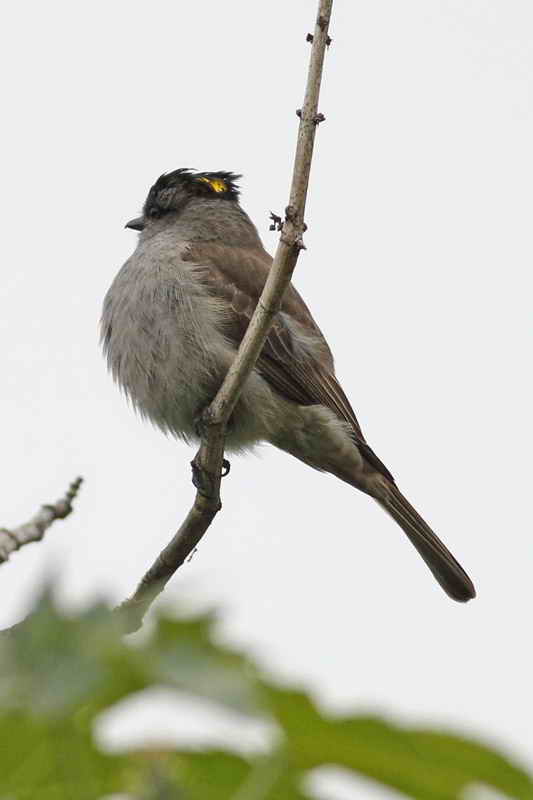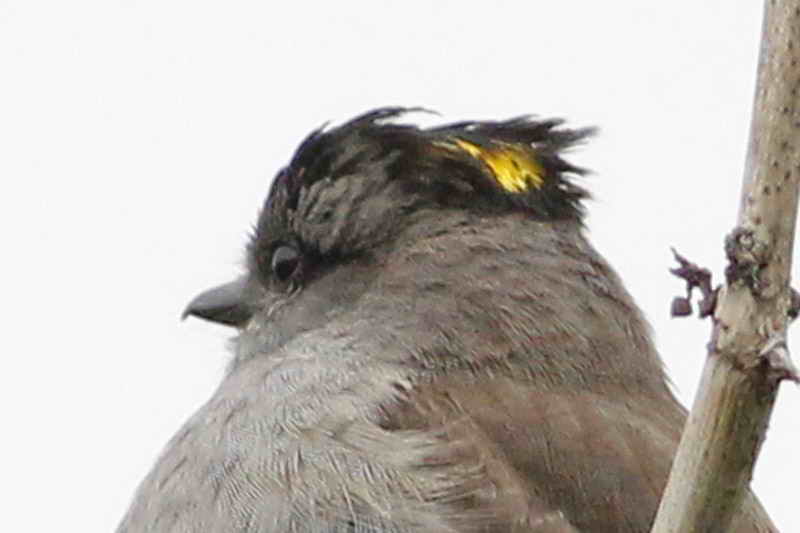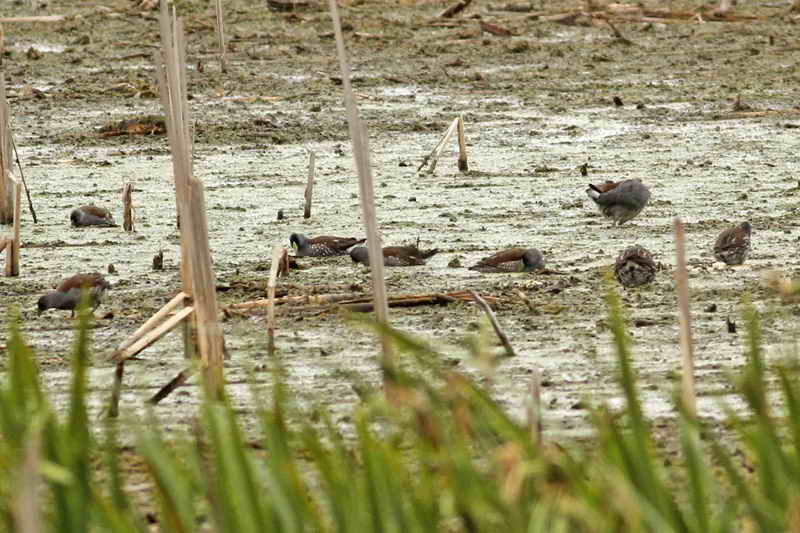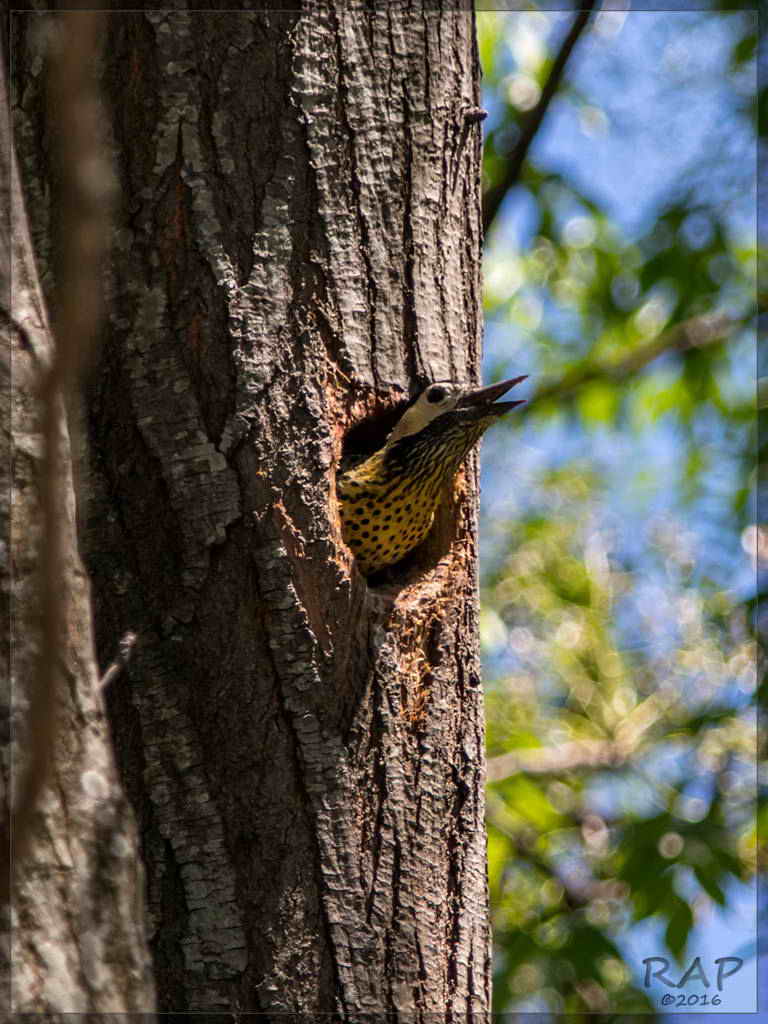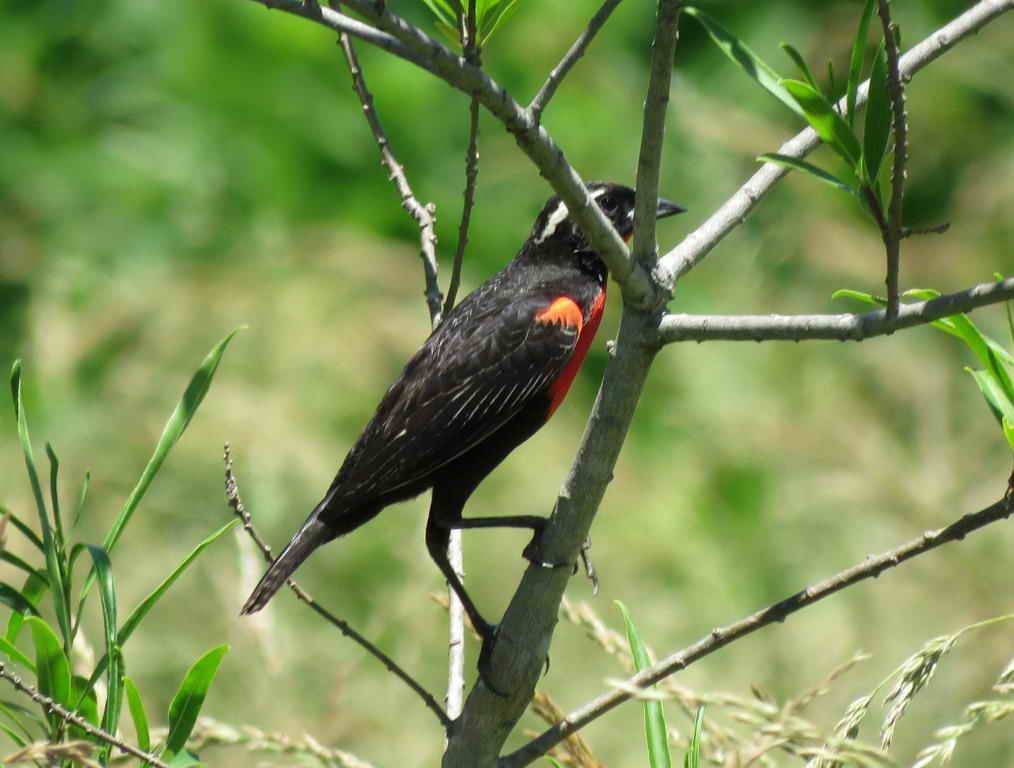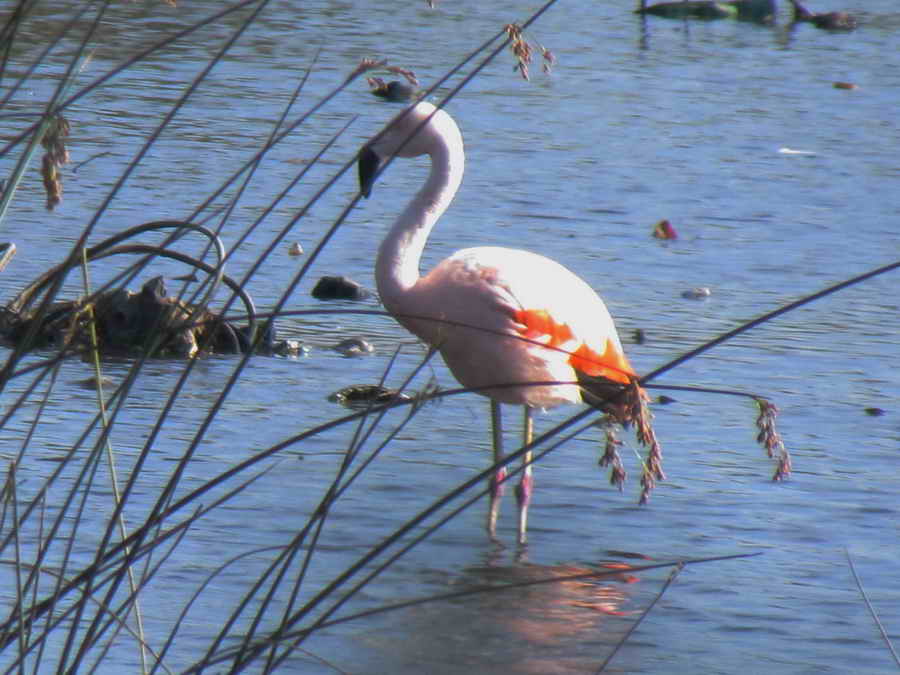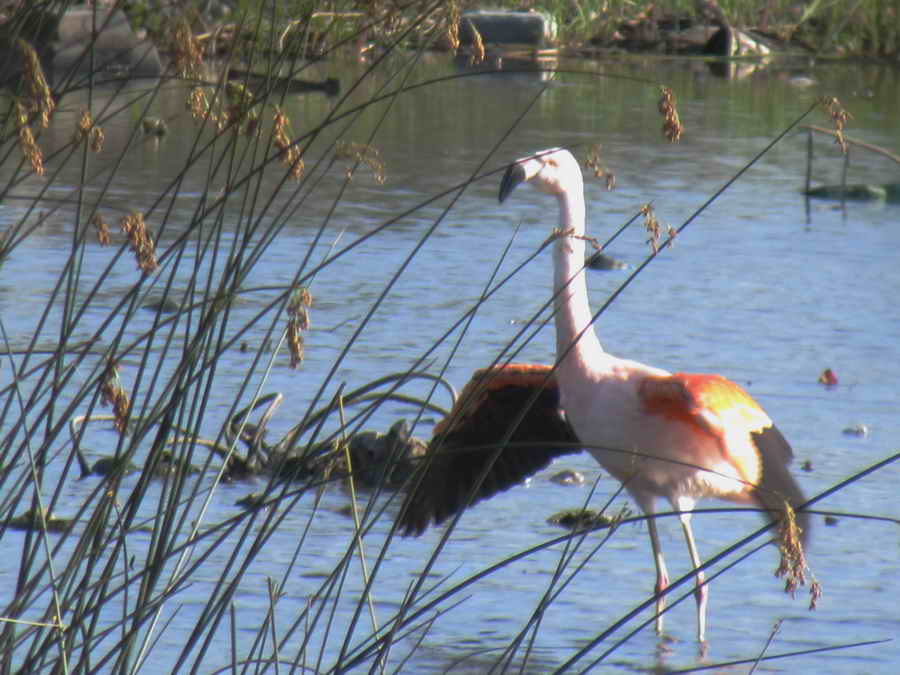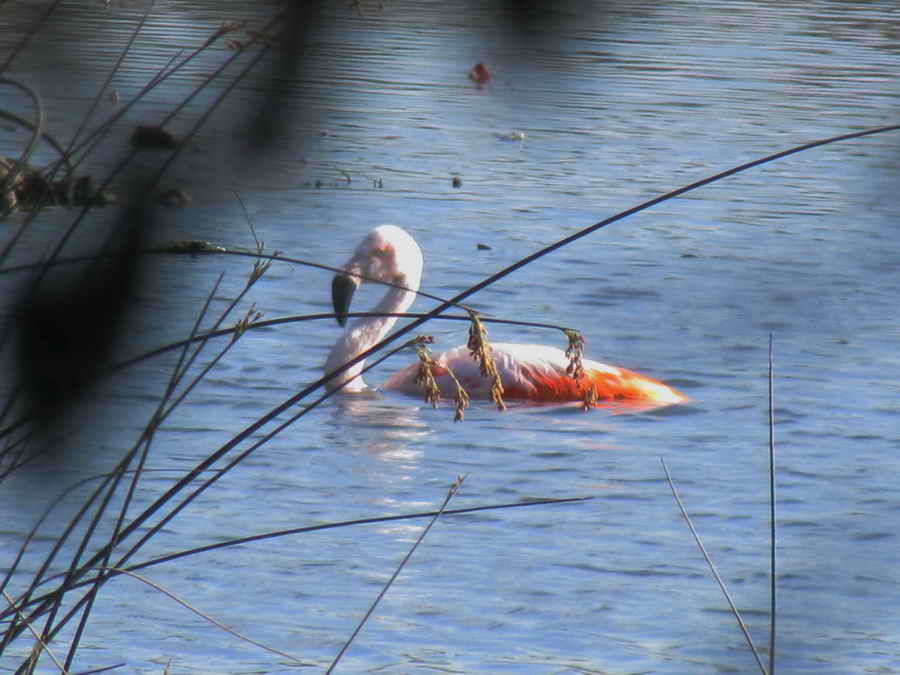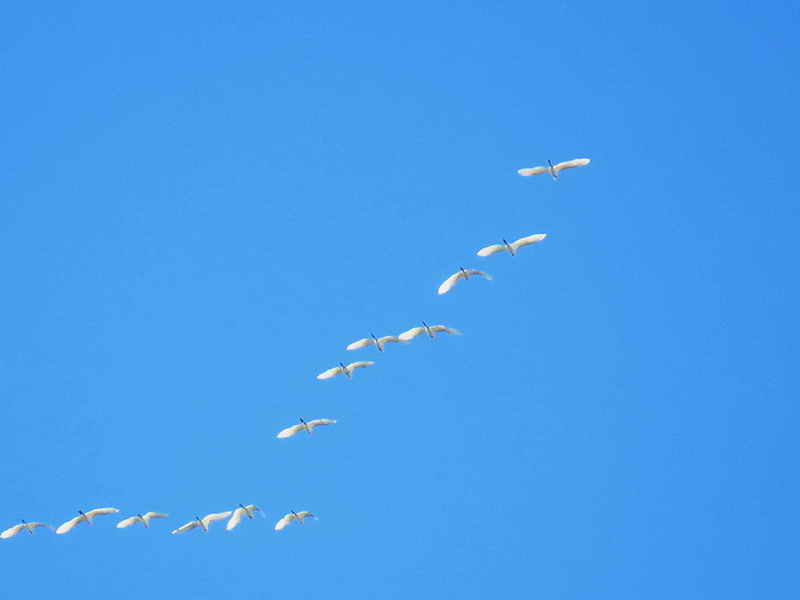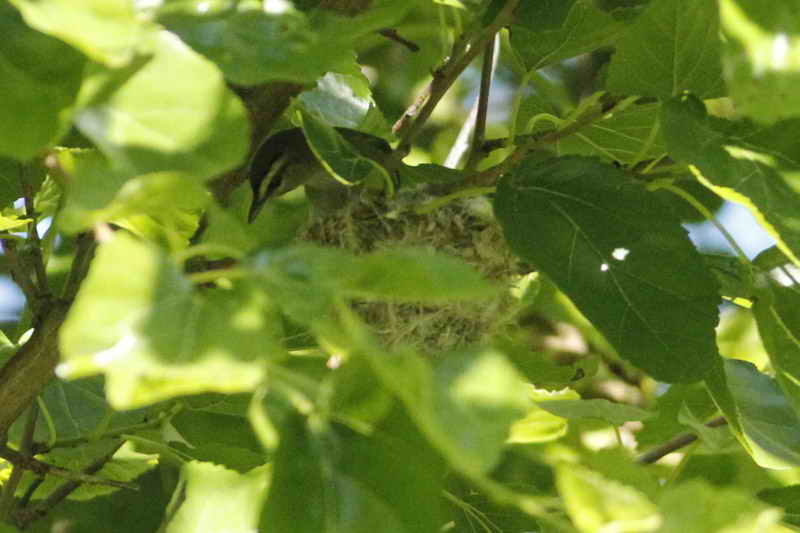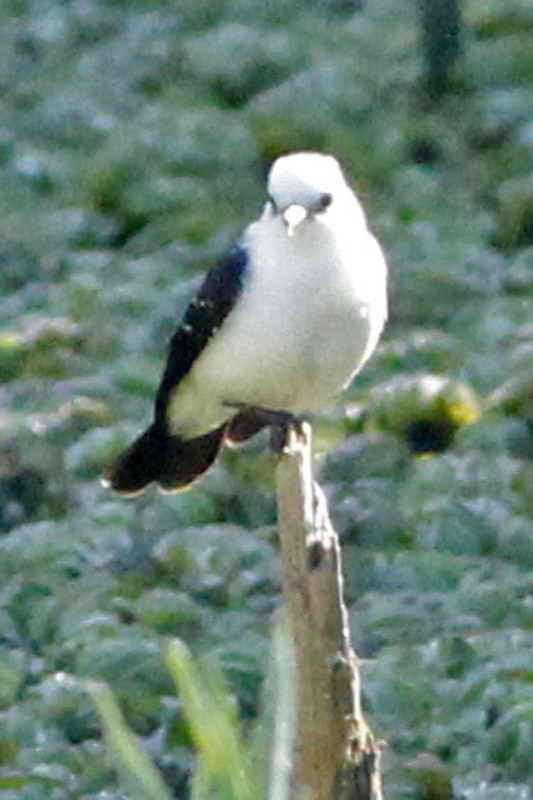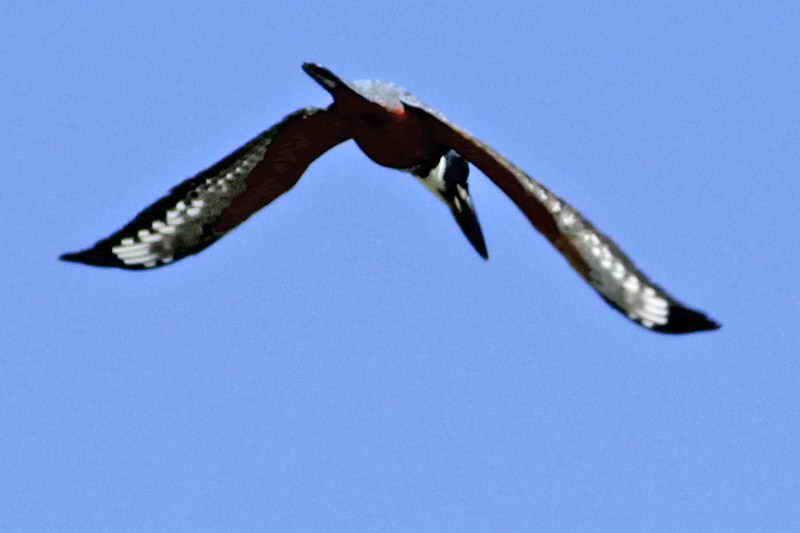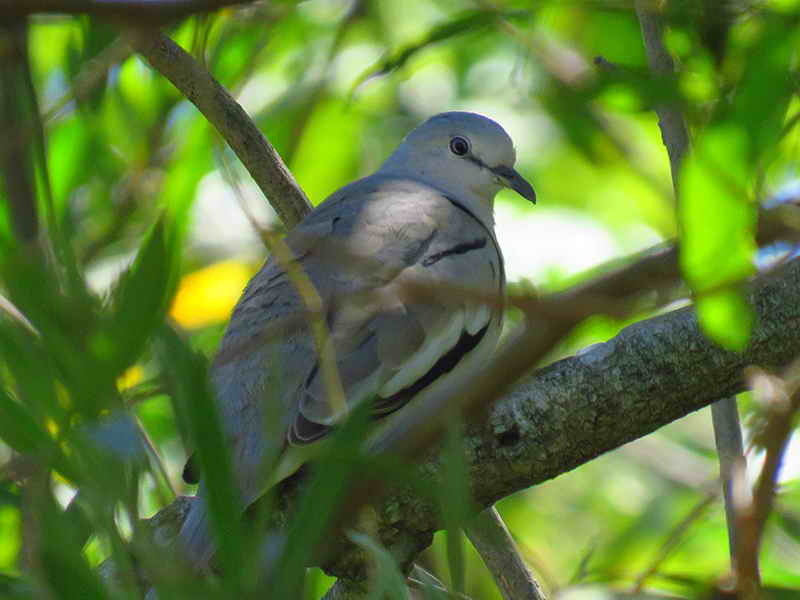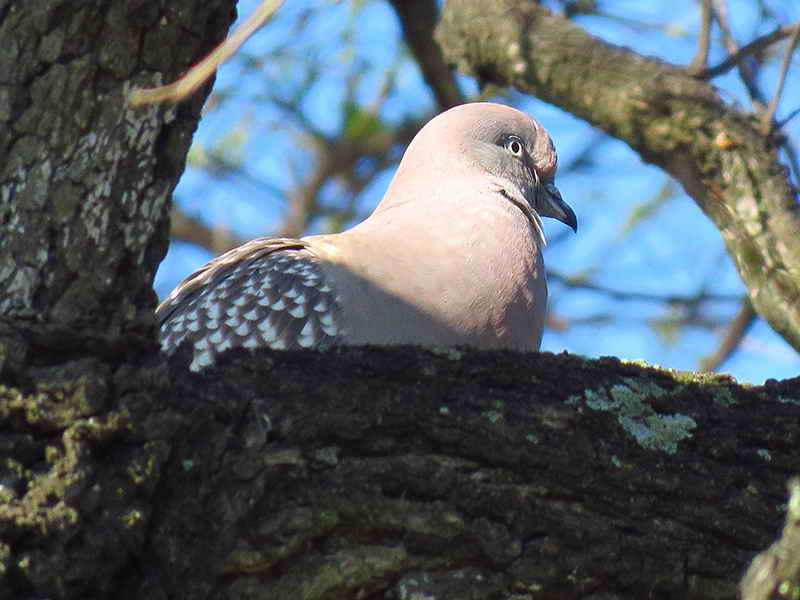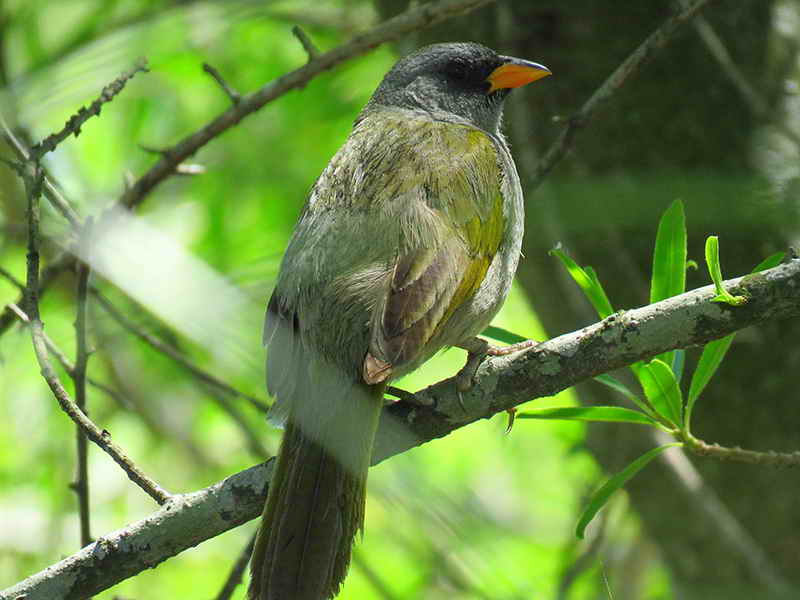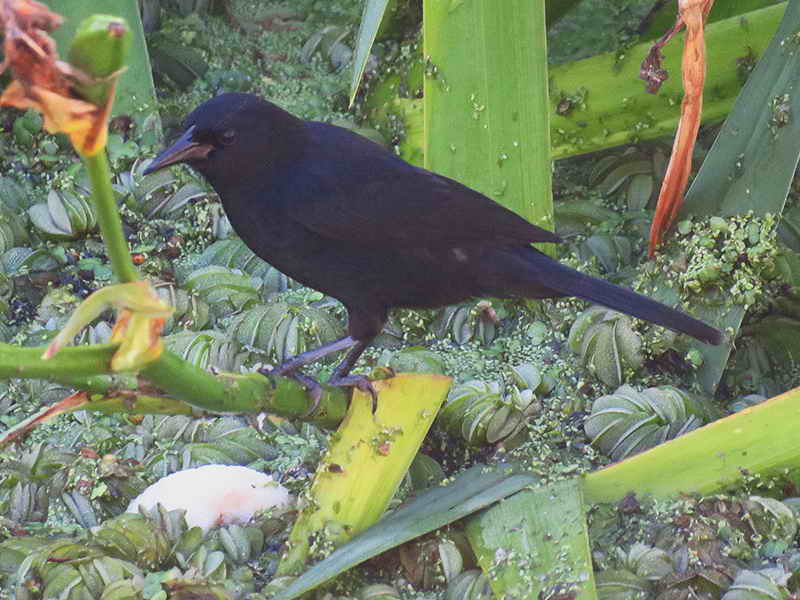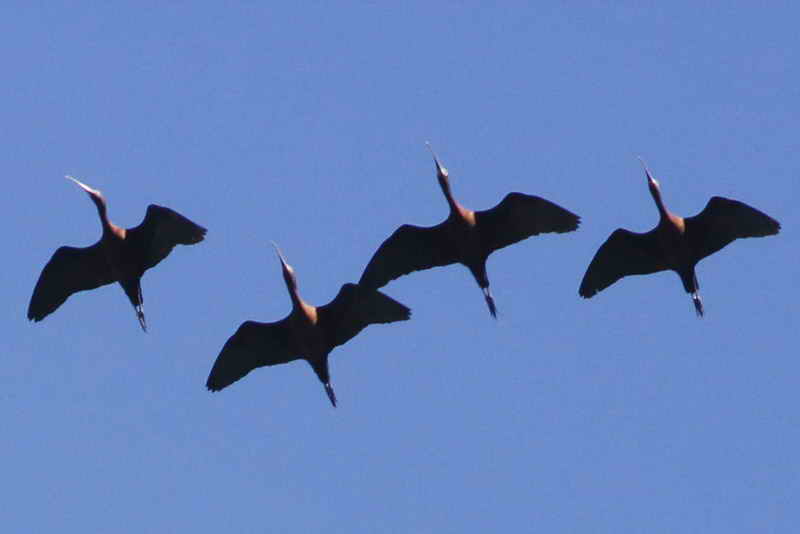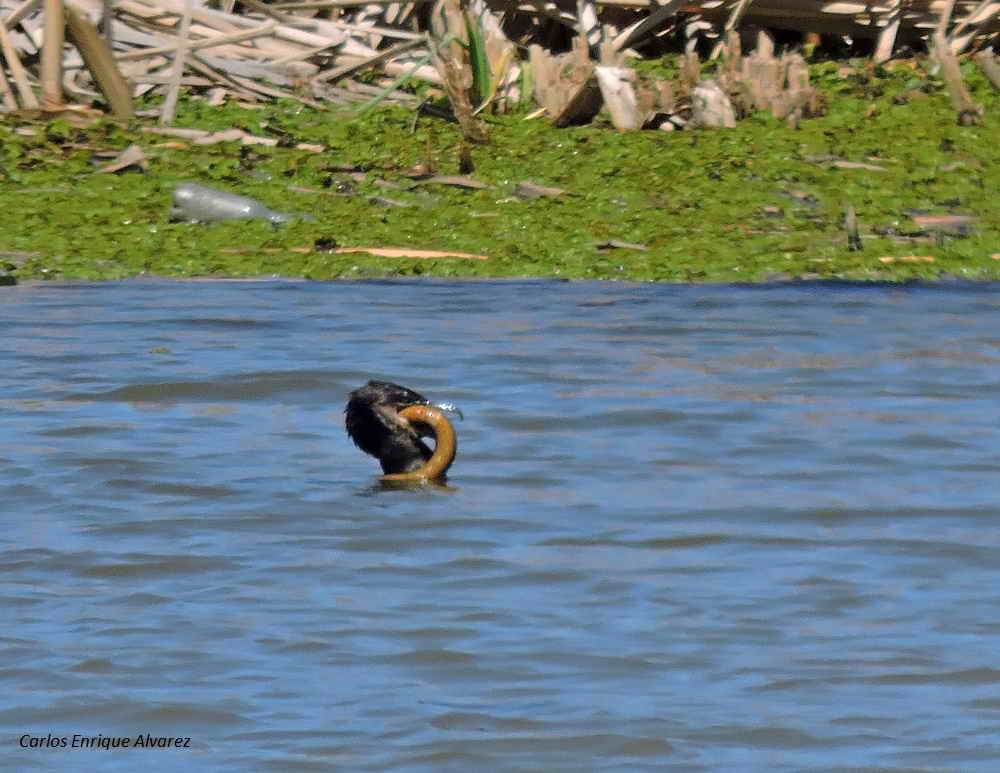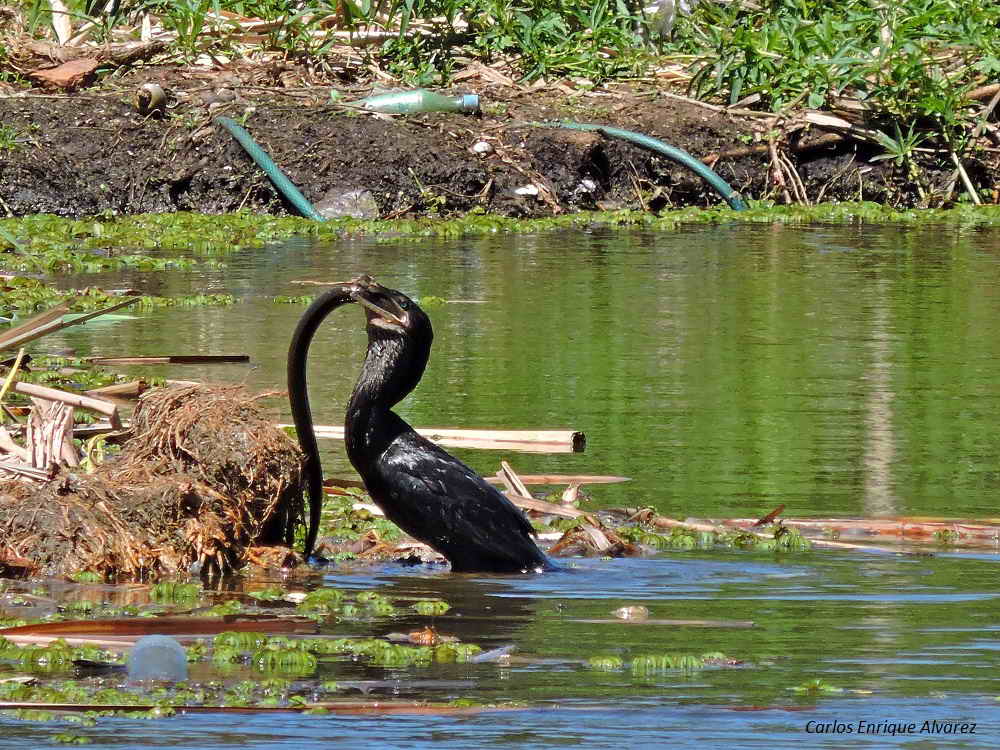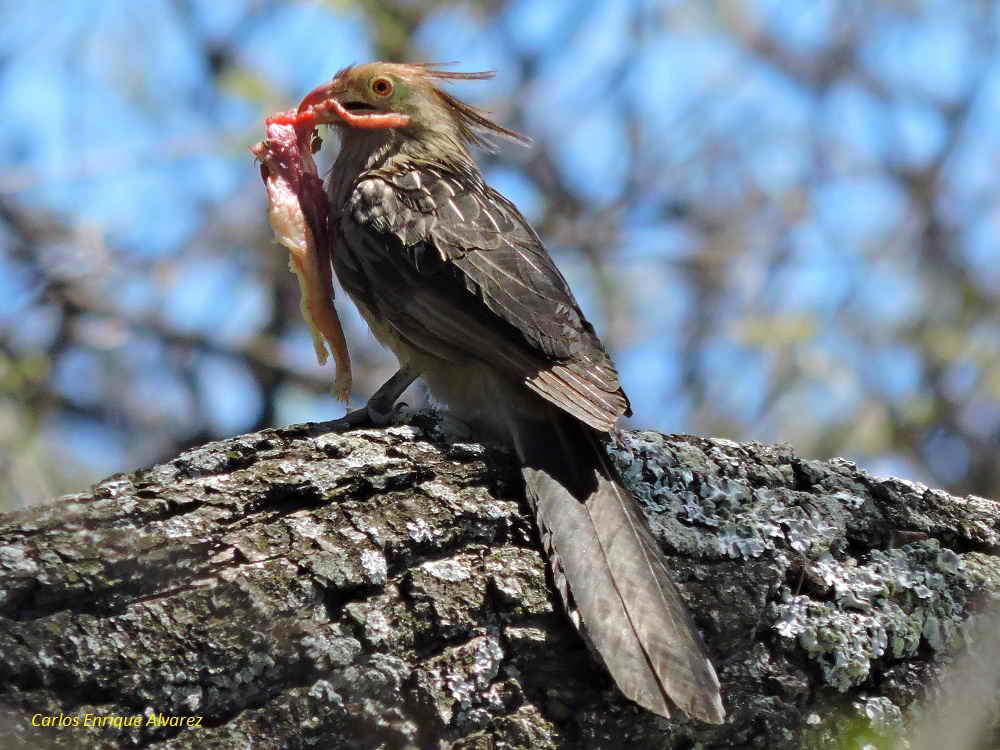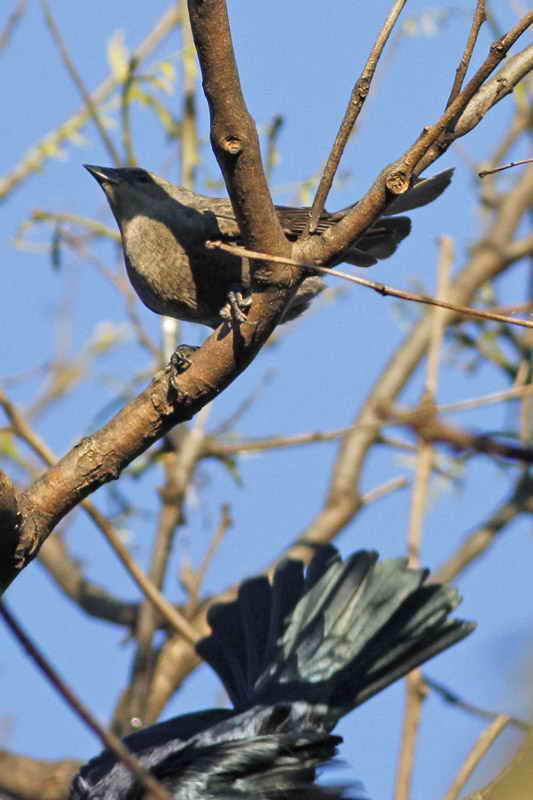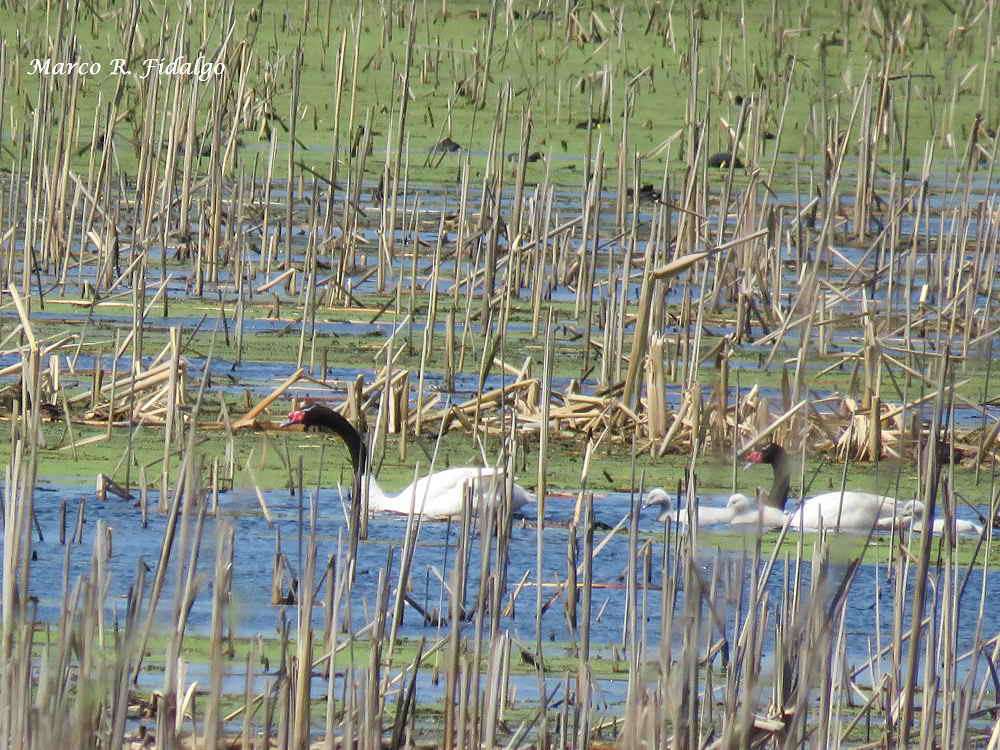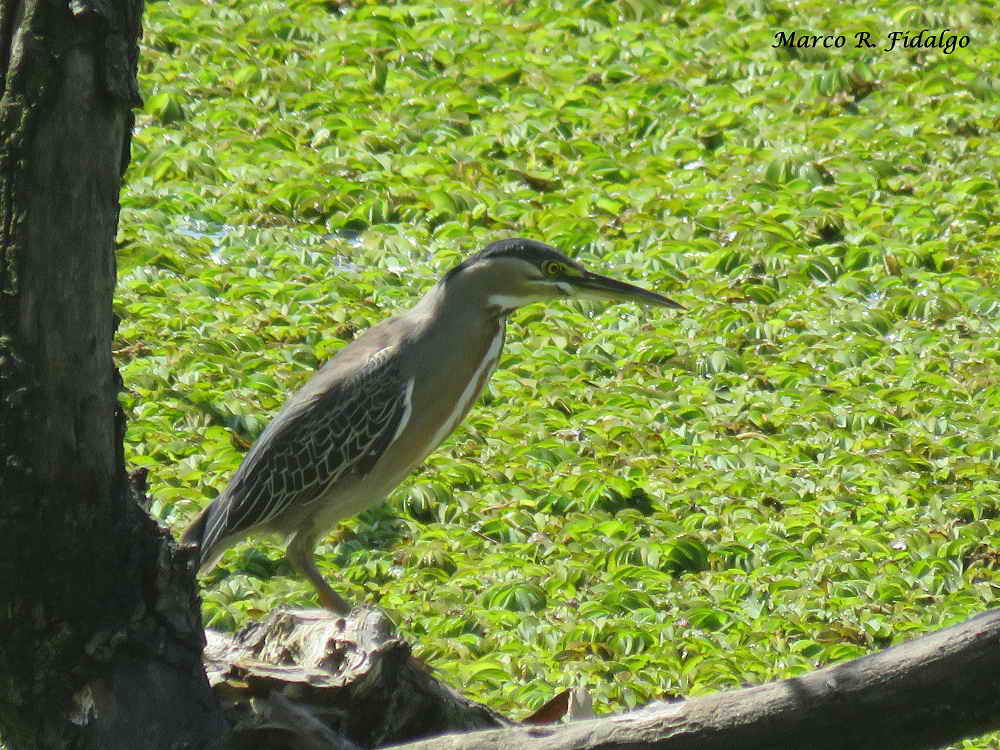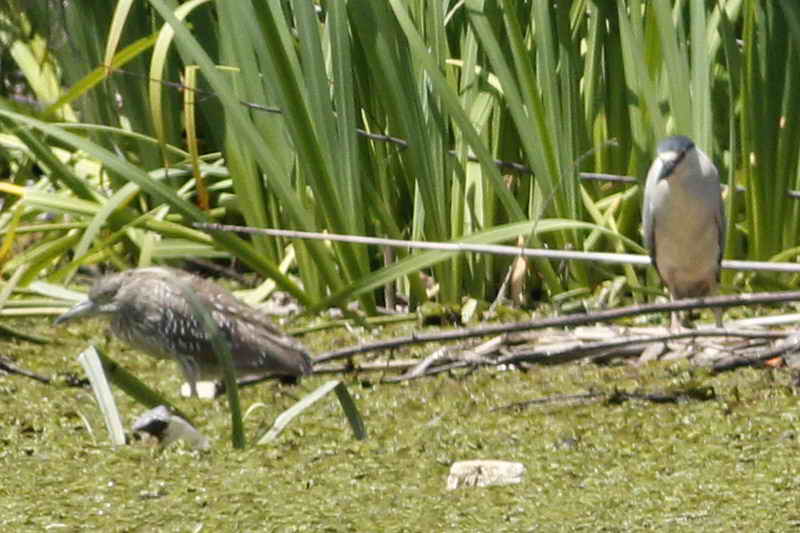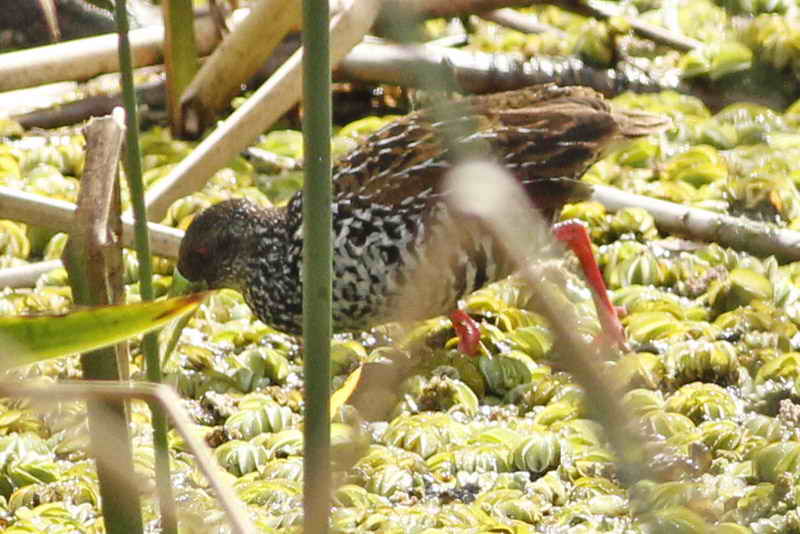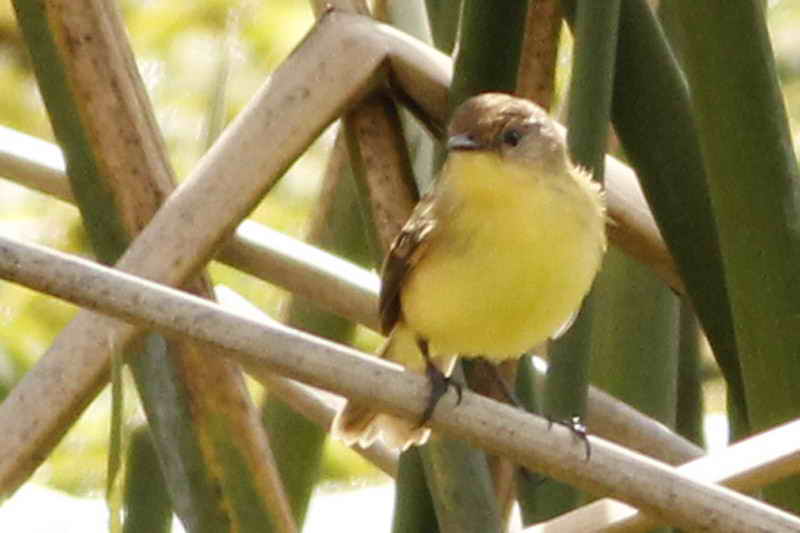News - November 2016
Parasitism: Red-eyed vireo - Shiny cowbird
Red-eyed Vireo
Vireo olivaceus
27-11-16 © Juan Carlos Ferreyra
Juan Carlos sends this new species parasitized by the Shiny Cowbird. To see all the species parasitized at the reserve
In Rodo's photo of November 19th there is only one egg. In Jesus's there are two. The rufescent tiger-heron lays two to three eggs with a difference of days. It begins incubation right away as the egg is laid. Consequently, chicks hatch with that same difference. The older, bigger and stronger than its siblings, will monopolize food if it is scarce and will get rid of them if neccessary.
The hatching of eggs in a staggered way due to early incubation is known as asynchronous hatching. It is synchronous hatching when incubation begins when all eggs have been laid. This is the case of ducks. All hatch within some hours and they are all the same size.
The hatching of eggs in a staggered way due to early incubation is known as asynchronous hatching. It is synchronous hatching when incubation begins when all eggs have been laid. This is the case of ducks. All hatch within some hours and they are all the same size.
27-11-16 © Eduardo Nicolás Cusano
27-11-16 © Eduardo Nicolás Cusano
Green-barred Woodpecker
Colaptes melanochloros
26-11-16 © Eduardo Nicolás Cusano
Analyzing a potential host?
This female shiny cowbird seemed pretty interested in the white-browed meadowlarks' movements. Knowing his parasitic behaviour it was no surprise. Anyway, a very low chance to be successful since the meadowlark passes by the reserve. There are no breeding records for this species
Rufescent tiger-Heron - Roadside hawk
This rufescent Tiger-Heron was a bit stressed with two roadside hawks perched in a tree nearby. It is a moment of big tension for birds since they cannot leave the nest. Below one of the roadside hawks
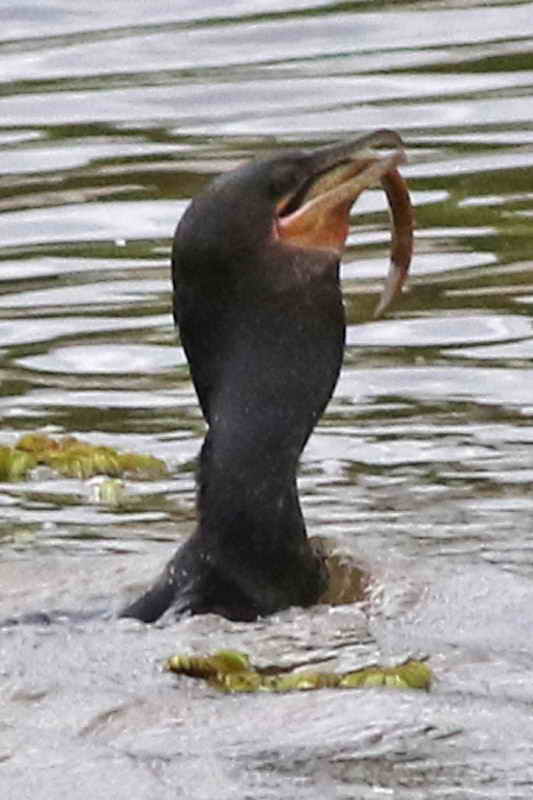
26-11-16 © J. Simón Tagtachian
The cormorant has caught a a marbled swamp eel Synbranchus marmoratus and other cormorants chase it to steal it. This behaviour is known as kleptoparasitism and it very common among cormorants. The benefit for the "thief" is to avoid searching and hunting the prey. The cormorant tries to steal but it can not
Chicks
The creamy-bellied thrush above is not a chick, but this mouthful of food is no doubt for a chick
| Black-necked Swan Cygnus melacoryphus  23 11 16 © Eduardo Ibarra 23 11 16 © Eduardo Ibarra |
Gull Pond  23 11 16 © Eduardo Ibarra 23 11 16 © Eduardo Ibarra 24 11 16 © Eduardo Ibarra 24 11 16 © Eduardo IbarraA great number of waterbirds at the pond |
Black-and-rufous Warbling-Finch
Poospiza nigrorufa
20-11-16 © Eduardo Nicolás Cusano
Voice
Another Rufescent Tiger-Heron's nest. The previous one which was almost at the corner of the Lizard Path failed. We hope this one will succeed..
Wattled Jacana
Jacana jacana
12-11-16 © Claudia y Tito Di Mauro
This mating ended in a clutch of four eggs. The male responsible for the incubation and raising of the youth faces the limpkin which approaches trying to get a snail. Too much pressure for the jacana which bursted
Gull Pond  11 11 16 © Eduardo Ibarra 11 11 16 © Eduardo IbarraLaguna de las Gaviotas hoy  7 16 © Eduardo Ibarra 7 16 © Eduardo IbarraSo it looked four months ago |
A rainy Sunday but ...
12-11-16 © Claudia y Tito Di Mauro
Looking for snails
| Coscoroba Swan Coscoroba coscoroba  11 11 16 © Eduardo Ibarra 11 11 16 © Eduardo Ibarra |
Views of the Coypu Pond  11 11 16 © Eduardo Ibarra 11 11 16 © Eduardo Ibarra 11 11 16 © Eduardo Ibarra 11 11 16 © Eduardo Ibarra |
During the walk Víctor told us about these old photos and we asked him to send them anyway. The flamingo has not got many records. They are valuable, indeed
European Starling
Sturnus vulgaris
05-11-16 © Cora Rimoldi
The chick peeping out of the hole
Carlos says that they were half an hour watching this cormorant eating the prey. They gave up and went on with the walk.






